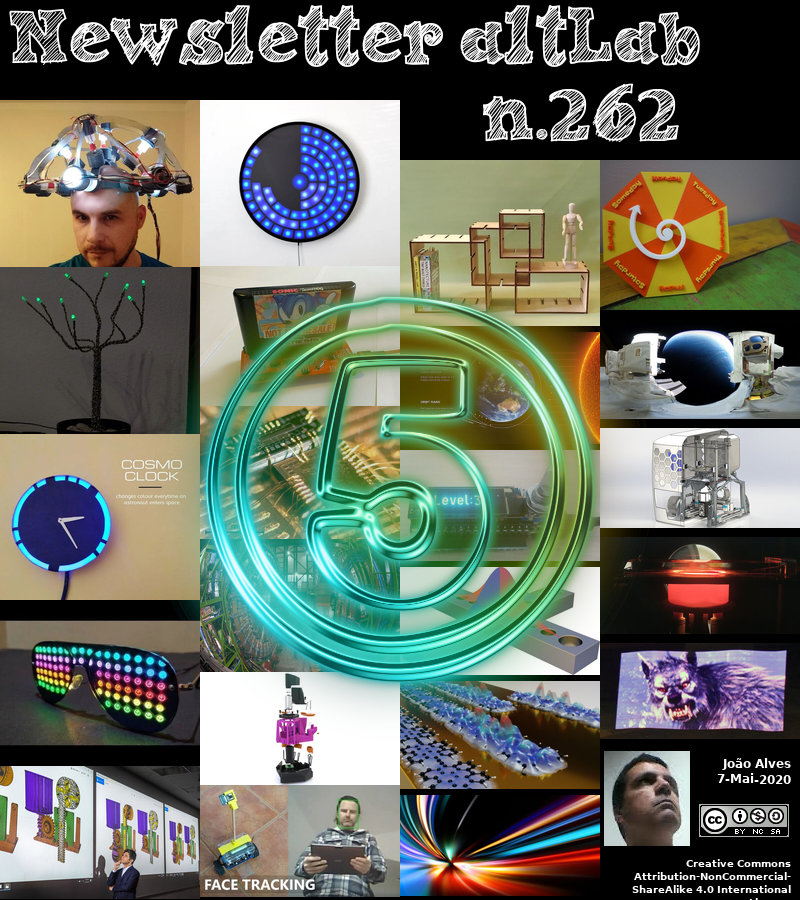2020-05-07 - Nº 262
Editorial
Esta é a Newsletter Nº 262 que se apresenta com o mesmo formato que as anteriores. Se gostar da Newsletter partilhe-a!
Todas as Newsletters encontram-se indexadas no link.
Esta Newsletter tem os seguintes tópicos:
Faz hoje anos que nascia, em 1909, o inventor e físico americano Edwin H. Land. Conhecido por fundar a Polaroid, o seu processo de uma fase para o desenvolvimento e impressão de fotografias foi a maior inovação em fotografia desde a introdução do filme em rolo. Ele demonstrou pela primeira vez a Polaroid Land Camera em 1947, que produzia impressões totalmente desenvolvidas em apenas 60 segundos. Land também aplicou o nome Polaroid ao filtro de polarização da luz que ele tinha inventado incorporando cristais adequados numa folha de plástico, amplamente conhecida pelo seu uso nas lentes dos óculos de sol. Os seus outros projectos incluíam raios-X instantâneos, projector de filmes em 3D entre as mais de 500 patentes que ele possuía.
E chegamos ao 5º aniversário da newsletter do altLab. Com este número são 262 semanas consecutivas a trazer noticias e projectos que vão aparecendo na Internet e que merecem ser referidos. Esta experiência tem sido profundamente enriquecedora para mim, não só pelo conhecimento que adquiro semanalmente ao deambular pela Internet em busca de novidades e de projecto interessantes para apresentar, como também por pode-lo partilhar com todos, criando na newsletter um índice para coisas interessantes que andam por ai.
O trabalho para criar a newsletter subdivide-se em dois momentos. Num primeiro momento que ocorre ao longo de toda a semana é feita a marcação de páginas/artigos que são potenciais candidatos a incluir, isto envolve um esforço nunca inferior a 1 hora por dia. Depois, no dia da newsletter é feito o trabalho de ler, seleccionar e resumir todos os artigos a incluir, este trabalho é de cerca de 4 a 5 horas. Portanto, para que esta newsletter chegue todas as semanas existe um esforço de cerca de 12 horas semanais da minha parte para a criar. As ferramentas que eu uso são relativamente rudimentares, "feedly" para marcar os artigos que aparecem nos diversos feed de RSS que tenho subscrito (cerca de 1000), depois usando o browser abro os links para as páginas, dou uma leitura, por vezes vou atrás da fonte do artigo e depois gravo a imagem de apresentação, o link para o vídeo e o texto assim como o link e titulo para a página. Isto fica tudo num ficheiro de texto que posteriormente é processado por um script de Python que faz toda a formatação e normalização dos textos e imagens produzindo um ficheiro final para a newsletter. A edição das imagens é feita com o GIMP e tudo isto é feito numa máquina com Linux Fedora.
Sei que existem diversas dificuldades em aceder à newsletter, havendo momentos em que a mesma se encontra inacessível ou apresenta imagens quebradas. Iremos num futuro muito próximo mudar a localização do site do altLab para outro servidor com mais capacidade e esperemos que nessa altura esses problemas fiquem resolvidos.
Só me resta agradecer o apoio que tenho de todos e enquanto me for possível continuarei com esta tarefa. E que venham mais 5!
E nesta semana que passou a Starlink explicou a forma como vai fazer para que a rede gigante de satélites que está a colocar em órbita não afecte os sistemas de observação astronómica. Essa operação passa por alterar a maneira como os satélites voam para sua altitude operacional, para que eles voem com os painéis numa orientação em direcção ao Sol. Como se trata de uma alteração que pode ser feita em Software, os engenheiros já estão a trabalhar nessa alteração.
Na Newsletter desta semana apresentamos diversas noticias, artigos científicos assim como projetos de maker. É apresentado o ebook Raspberry Pi Camera Guide que aborda a nova câmara do Raspberry PI lançada a semana passada.
 João Alves ([email protected])
João Alves ([email protected])
O conteúdo da Newsletter encontra-se sob a licença  Creative Commons Attribution-NonCommercial-ShareAlike 4.0 International License.
Creative Commons Attribution-NonCommercial-ShareAlike 4.0 International License.
Novidades da Semana
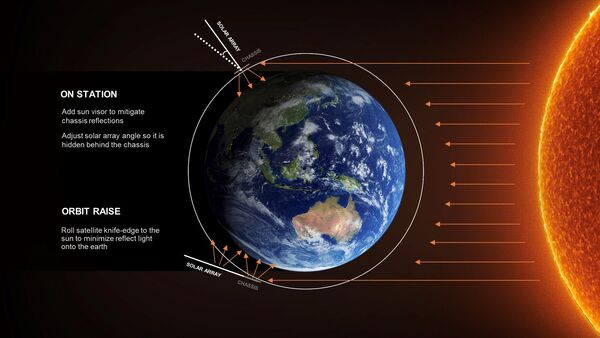
Starlink discussion National Academy of Sciences
"SpaceX is launching Starlink to provide high-speed, low-latency broadband connectivity across the globe, including to locations where internet has traditionally been too expensive, unreliable, or entirely unavailable. We also firmly believe in the importance of a natural night sky for all of us to enjoy, which is why we have been working with leading astronomers around the world to better understand the specifics of their observations and engineering changes we can make to reduce satellite brightness. Our goals include: Making the satellites generally invisible to the naked eye within a week of launch. We're doing this by changing the way the satellites fly to their operational altitude, so that they fly with the satellite knife-edge to the Sun. We are working on implementing this as soon as possible for all satellites since it is a software change. Minimizing Starlink's impact on astronomy by darkening satellites so they do not saturate observatory detectors." [...]
Outras Notícias

STMicroelectronics Launches Ultra-Economical Synchronous-Rectification Controllers in Space-Saving 6-Pin Packages
"STMicroelectronics’ SRK1000A and SRK1000B secondary-side synchronous-rectification (SR) controllers for flyback converters, featuring high efficiency and low power consumption, introduce a new, more affordable and smaller-footprint option for battery chargers, quick chargers, adapters, and USB power-delivery outlets. Designed for fast turn-on with minimum delay, and with innovative adaptive turn-off logic, the devices maximize synchronous-rectification MOSFET conduction time and minimize the effects of parasitic inductance in the circuit without the need to add external components, leading to greatly improved system efficiency and a reduced bill of materials. The SRK1000A and SRK1000B are both able to manage a wide range of flyback controllers including quasi-resonant (QR) and mixed CCM/DCM fixed frequency operation up to 300kHz, simplifying system design. Both devices allow programmable blanking time after turn-on (TON), via resistor selection, to prevent noise from inducing spurious behavior. The SRK1000A has a 2μs fixed blanking time after turn-off (TOFF), while the corresponding value for the SRK1000B is 3μs. The devices both offer an efficient low power mode at light load, entering a low-consumption sleep mode when synchronous rectification is no longer beneficial." [...]
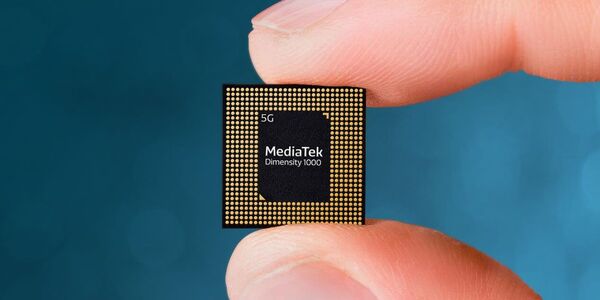
MediaTek Unveils 5G-Integrated Dimensity 1000+ Chip for Smartphones
"Dimensity 1000+ packs 5G connectivity and gaming, video and power-saving technology enhancements for flagship-grade user experiences MediaTek today announced enhancements to its Dimensity 5G chipset family with the Dimensity 1000+, an enhanced 5G-integrated chip with a number of leading technologies and upgrades for gaming, video and power-efficiency. Dimensity 1000+ is based on the flagship performance of the Dimensity 1000 series and delivers a high-end, premium user experience. With years of accumulated experience in integrated chip technologies, MediaTek has made breakthroughs and innovations in all aspects and has become a pioneer in the 5G era. “Dimensity 1000+ showcases an incredible, flagship-grade user experience for smartphone users globally. The single chip integrates in a suite of world-leading innovations in 5G connectivity and power-efficiency, plus unique display, video and gaming technologies that make it stand out” said Dr. Yenchi Lee, Assistant General Manager of MediaTek’s Wireless Communications Business Unit. World’s Most Advanced 5G-integrated SoC, with Best-in-Class Power Efficiency Dimensity 1000+ delivers leading 5G capabilities including Carrier Aggregation, dual 5G SIM, superfast 5G speeds, and MediaTek’s 5G UltraSave power saving technologies that dynamically adjust the modem’s power configuration and operating frequency according to network conditions and user activities to significantly save power." [...]

STMicroelectronics Simplifies Design and Boosts Safety with Highly Integrated Universal Car-Lock Controller
"The STMicroelectronics L99UDL01 automotive universal door-lock IC integrates six MOSFET half-bridge outputs and two half-bridge gate drivers with protection and diagnostic functions that enhance safety, simplify design, and save space. As a complete centralized solution for electronically driving car locks from a body-control module (BCM), the L99UDL01 replaces multiple individual motor drivers and associated analog and passive components while providing more sophisticated functionality. The IC integrates a unique safety feature that overrides normal operation in the event of an accident to help ensure that first responders will have access to the vehicle. Adding further value are PWM output-current regulation and high-level diagnostics capable of detecting over current, open load, short to battery, and short to ground. The load-integrity checks can be completed without actuating the load. The six integrated MOSFET half bridges can be connected independently or as two channels containing up to three half bridges in parallel to share higher-current loads." [...]

Intel Acquires Moovit to Accelerate Mobileye’s Mobility-as-a-Service Offering
"Intel Corporation today announced it has acquired Moovit, a mobility-as-a-service (MaaS) solutions company, for approximately $900 million ($840 million net of Intel Capital equity gain). Moovit is known for its urban mobility application that offers travelers around the world the best multimodal trip planning by combining public transportation, bicycle and scooter services, ride-hailing, and car-sharing. The addition of Moovit brings Intel’s Mobileye closer to achieving its plan to become a complete mobility provider, including robotaxi services, which is forecast to be an estimated $160 billion opportunity by 2030. “Intel’s purpose is to create world-changing technology that enriches the lives of every person on Earth, and our Mobileye team delivers on that purpose every day,” said Bob Swan, Intel CEO. “Mobileye’s ADAS technology is already improving the safety of millions of cars on the road, and Moovit accelerates their ability to truly revolutionize transportation – reducing congestion and saving lives – as a full-stack mobility provider.” Moovit has established its leadership in the MaaS space with more than 800 million users and services in 3,100 cities across 102 countries. Today, Mobileye is the leading automotive solutions partner that enables advanced driver-assistance systems (ADAS) deployed on nearly 60 million vehicles with more than 25 automaker partners." [...]
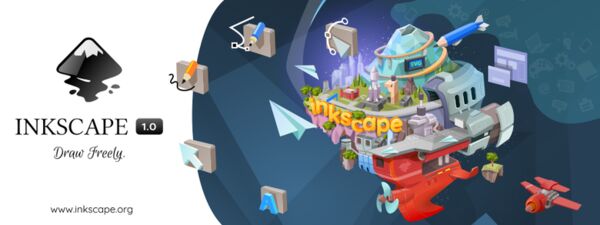
Introducing Inkscape 1.0
"Smoother performance, HiDPI support, new & improved Live Path Effects & native macOS app After a little over three years in development, the team is excited to launch the long awaited Inkscape 1.0 into the world. Built with the power of a team of volunteers, this open source vector editor represents the work of many hearts and hands from around the world, ensuring that Inkscape remains available free for everyone to download and enjoy. In fact, translations for over 20 out of all 88 languages were updated for version 1.0, making the software more accessible to people from all over the world. A major milestone was achieved in enabling Inkscape to use a more recent version of the software used to build the editor's user interface (namely GTK+3). Users with HiDPI (high resolution) screens can thank teamwork that took place during the 2018 Boston Hackfest for setting the updated-GTK wheels in motion. Smoother performance & first native macOS application This latest version is available for Linux, Windows and macOS." [...]
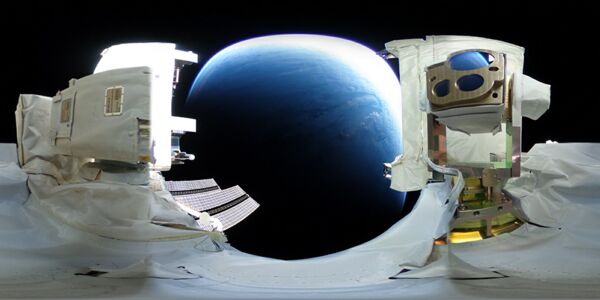
Small Optical Link for International Space Station (SOLISS) Succeeds in Bidirectional Laser Communication Between Space and Ground Station
"The Japan Aerospace Exploration Agency (JAXA, President: Hiroshi Yamakawa), the National Institute of Information and Communications Technology (NICT, President: Hideyuki Tokuda) and Sony Computer Science Laboratories, Inc. (Sony CSL, President and CEO: Hiroaki Kitano) announced today that they were successful in establishing a bidirectional laser communication link between SOLISS (Small Optical Link for International Space Station), installed in the Exposed Facility of the Japanese Experiment Module (JEM) "Kibo" of the International Space Station (ISS) and the optical ground station for satellite communications (hereinafter, optical ground station)*1 of NICT, and in transmitting high-definition (HD) image data via Ethernet. This marks the first time in the world that bidirectional symmetric Ethernet links have been established by using laser communication devices designed for small satellites. The SOLISS system was installed on the Kibo’s exposed facility on the ISS in September 2019. Since then, in order to establish a bidirectional laser communication link between the on-board system and the optical ground station, communication tests have been conducted about once a week, weather permitting, while making adjustments to various parameters. As a result, on October 25, 2019, an optical downlink (orientation control), a fine pointing control from SOLISS to the optical ground station was successfully established, and on March 5, 2020, bidirectional laser communication link with the optical ground station using a laser beam (with a wavelength of 1.5 µm) was successfully established. Furthermore, on March 11, HD images were successfully received at the optical ground station from SOLISS via 100 Mbps Ethernet." [...]
Ciência e Tecnologia
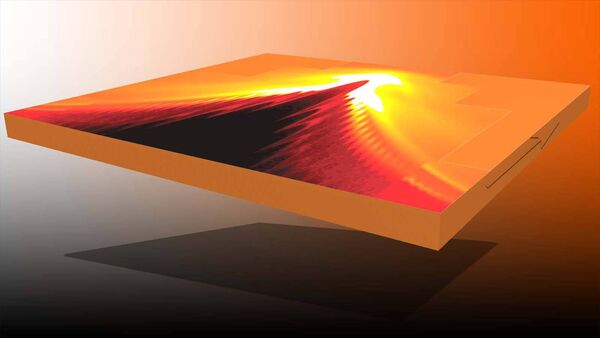
New Princeton study takes superconductivity to the edge
"A discovery that long eluded physicists has been detected in a laboratory at Princeton. A team of physicists detected superconducting currents — the flow of electrons without wasting energy — along the exterior edge of a superconducting material. The finding was published May 1 in the journal Science. The superconductor that the researchers studied is also a topological semi-metal, a material that comes with its own unusual electronic properties. The finding suggests ways to unlock a new era of “topological superconductivity” that could have value for quantum computing. “To our knowledge, this is the first observation of an edge supercurrent in any superconductor,” said Nai Phuan Ong, Princeton’s Eugene Higgins Professor of Physics and the senior author on the study." [...]

Stanford researchers one step closer toward enabling electric cars to recharge themselves wirelessly as they drive
"Engineers have demonstrated a practical way to use magnetism to transmit electricity wirelessly to recharge electric cars, robots or even drones. The technology could be scaled up to power electric cars as they drive over highways, robots on factory floors and drones hovering over rooftops. Stanford engineers have taken a big step toward making it practical for electric cars to recharge as they speed along futuristic highways built to “refuel” vehicles wirelessly. Although wireless charging pads already exist for smartphones, they only work if the phone is sitting still. For cars, that would be just as inconvenient as the current practice of plugging them in for an hour or two at charging stations. Three years ago, Stanford electrical engineer Shanhui Fan and Sid Assawaworrarit, a graduate student in his lab, built the first system that could wirelessly recharge objects in motion." [...]
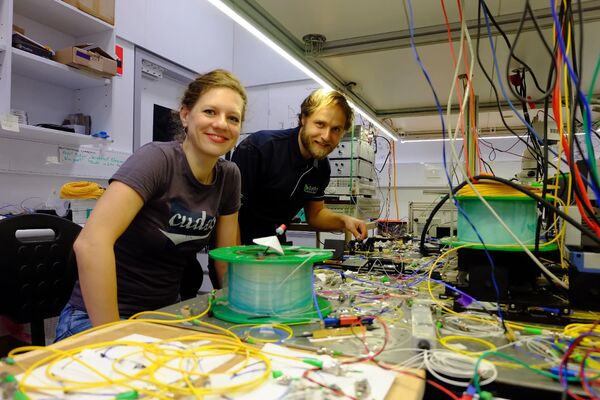
Light, sound, action: extending the life of acoustic waves on microchips
"Research opens door to low-heat, low-energy, fast internet Microchips without electrons will allow for the invention of data processing systems that don't overheat, have low energy costs and reduce greenhouse gas emissions. This foundational work will help scientists invent systems to achieve those aims. Scientists in Australia and Europe have taken an important step towards removing ‘hot’ electrons from the data chips that are a driving force in global telecommunications. Researchers from the University of Sydney Nano Institute and Max Planck Institute for the Science of Light say that chips using light and sound, rather than electricity, will be important for the development of future tech, such as high-speed internet as well as radar and sensor technology. This will require the low-heat, fast transmission of information. “As demand for high bandwidth information systems increase, we want to get ahead of the curve to ensure we can invent devices that don’t overheat, have low energy costs and reduce the emission of greenhouse gases,” said Dr Moritz Merklein from the Eggleton Research Group in the School of Physics and Sydney Nano." [...]
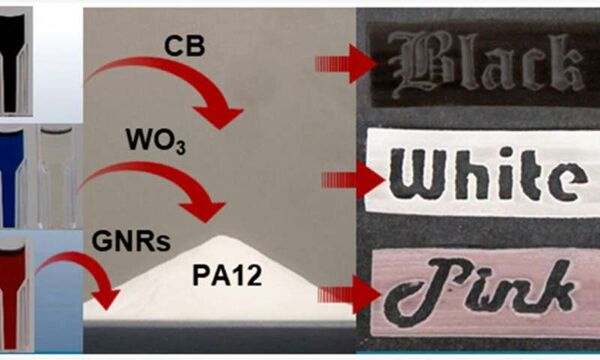
High color purity 3D printing
"ICFO researchers report on a new method to obtain high color purity 3D objects with the use of a new class of nanoparticles. Selective powder sintering for 3D printing has recently become an increasingly affordable solution for manufacturing made-to-order elements of almost any shape or geometry. This technique involves heating a bed of powder (such as polyamide, PA12) to just below its melting point, using an IR light source to selectively melt a cross section of the powder, then adding more powder and repeating to form a 3D object. To reduce costs and increase printing speed, a photothermal sensitizer is often added to the powders. Typically carbon-based, with a strong broadband absorption, adding these sensitizers to the polymer powders increases the conversion of incident light to heat, which means greater print speeds. However, carbon-based sensitizers can only produce black or gray objects." [...]

A temporal supersymmetry
"Researchers at the UPV pave the way to designing omnidirectional invisible materials Researchers at the Universitat Politècnica de València (UPV), belonging to the Nanophotonics Technology Center, have taken a new step in designing omnidirectional invisible materials. At their laboratories, they have discovered a new fundamental symmetry in the laws of electromagnetism, acoustics and elasticity: a temporal supersymmetry. This finding has been published in the Nature Communications journal. According to Carlos García Meca and Andrés Macho Ortiz, researchers at NTC-UPV, this new symmetry allows the conservation of the linear moment between dramatically different physical systems. This paves the way to designing pioneering optical, acoustic and elastic devices, including invisible omnidirectional, polarization-independent materials, ultra-compact frequency shifters, isolators and pulse-shape transformers. “These devices allow us to unusually modify different properties of light signals inside photonic circuits to process the spread of information." [...]
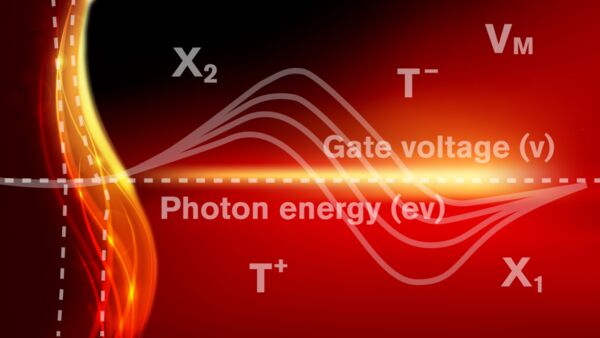
Researchers shed new light on creating nanolasers using 2D materials
"When something just works, that’s usually a good thing. But for scientists and engineers, when something works and they don’t understand the mechanism behind it, it raises enough questions to keep them up at night. Cun-Zheng Ning, a professor of electrical engineering in the Ira A. Fulton Schools of Engineering at Arizona State University, has spent the last 10 years researching semiconductor nanophonics — how light and lasers act within the nanoscale of semiconductors. Understanding the physics behind lasers at nanoscale and how they interact with semiconductors can have major implications for high-speed communication channels for supercomputers and data centers — but only if researchers can figure out how and why they work to reproduce their results. Between 2015 and 2017, researchers at several U.S. universities including Ning and his collaborators at Tsinghua University in China produced experimental results showing that lasers can be produced in 2D materials as thin as a single layer of molecules. Additionally, while other researchers had developed these lasers at cryogenic temperatures, Ning’s team produced them at room temperature for the first time." [...]
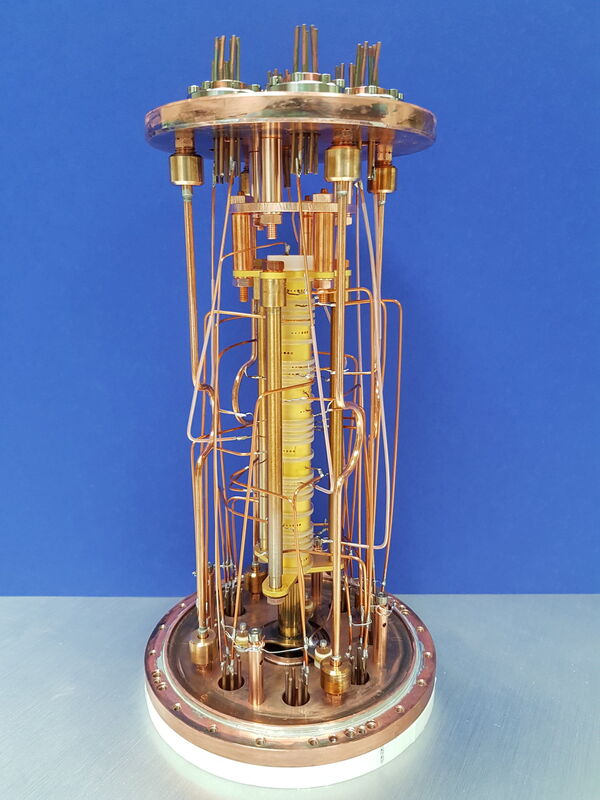
Quantum jump tipping the balance
"Measuring tiny differences in mass between different quantum states provides new insights into heavy atoms A new door to the quantum world has been opened: when an atom absorbs or releases energy via the quantum leap of an electron, it becomes heavier or lighter. This can be explained by Einstein’s theory of relativity (E = mc2). However, the effect is minuscule for a single atom. Nevertheless, the team of Director Klaus Blaum, and Group Leader Sergey Eliseev, both at the Max Planck Institute for Nuclear Physics, has successfully measured this infinitesimal change in the mass of individual atoms for the first time. In order to achieve this, they used the ultra-precise Pentatrap atomic balance at the Institute in Heidelberg. The team discovered a previously unobserved quantum state in rhenium, which could be interesting for future atomic clocks." [...]
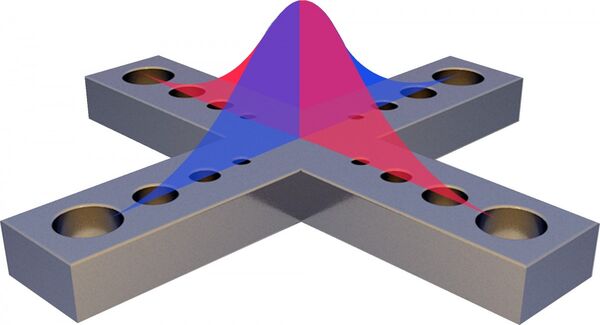
Army researchers see path to quantum computing at room temperature
"Army researchers predict quantum computer circuits that will no longer need extremely cold temperatures to function could become a reality after about a decade. For years, solid-state quantum technology that operates at room temperature seemed remote. While the application of transparent crystals with optical nonlinearities had emerged as the most likely route to this milestone, the plausibility of such a system always remained in question. Now, Army scientists have officially confirmed the validity of this approach. Dr. Kurt Jacobs, of the U.S. Army Combat Capabilities Development Command’s Army Research Laboratory, working alongside Dr. Mikkel Heuck and Prof. Dirk Englund, of the Massachusetts Institute of Technology, became the first to demonstrate the feasibility of a quantum logic gate comprised of photonic circuits and optical crystals. “If future devices that use quantum technologies will require cooling to very cold temperatures, then this will make them expensive, bulky, and power hungry,” Heuck said." [...]
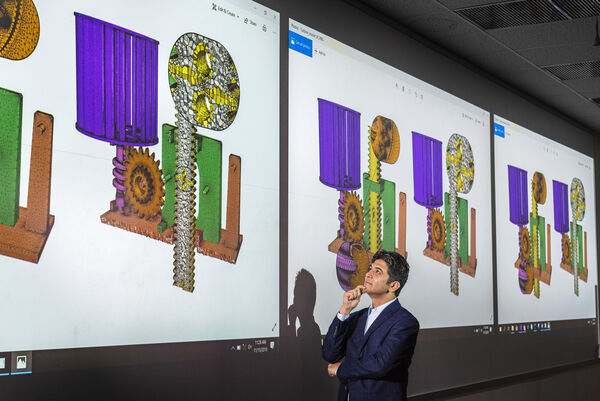
Automating complex 3D modeling
"A team of researchers led by Sandia National Laboratories have invented a first-of-its-kind software for scientists to create accurate digital representations of complex objects. The new software, VoroCrust, offers a novel way to create digital representations, called meshes, which are used by scientists in many disciplines that work with geometric models of all kinds of parts — from rotors to wheels to protective equipment. Complex meshes often have curves, sharp edges or holes. Once created, they look like 3D images that can be used in computer simulations that incorporate algorithms to determine when parts might fail in extreme conditions. This is a helpful — and often essential — aspect of design prior to creating prototypes and parts for real tests. For example, a scientist in the aerospace industry might make a mesh of an airplane wing and run it through a computer simulation to learn more about what will happen to it in high wind and extreme temperatures." [...]
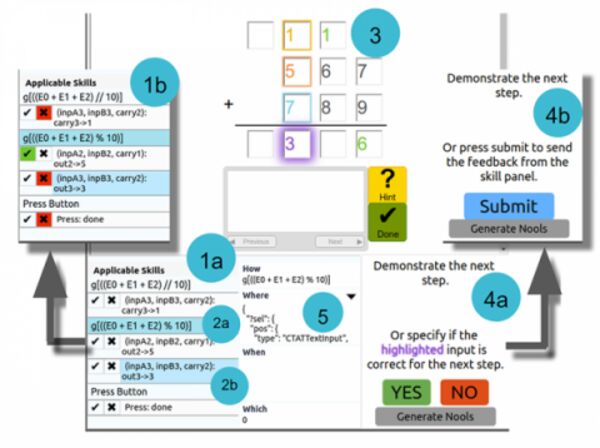
New AI Enables Teachers To Rapidly Develop Intelligent Tutoring Systems
"Intelligent tutoring systems have been shown to be effective in helping to teach certain subjects, such as algebra or grammar, but creating these computerized systems is difficult and laborious. Now, researchers at Carnegie Mellon University have shown they can rapidly build them by, in effect, teaching the computer to teach. Using a new method that employs artificial intelligence, a teacher can teach the computer by demonstrating several ways to solve problems in a topic, such as multicolumn addition, and correcting the computer if it responds incorrectly. Notably, the computer system learns to not only solve the problems in the ways it was taught, but also to generalize to solve all other problems in the topic, and do so in ways that might differ from those of the teacher, said Daniel Weitekamp III, a Ph.D. student in CMU's Human-Computer Interaction Institute (HCII). "A student might learn one way to do a problem and that would be sufficient," Weitekamp explained. "But a tutoring system needs to learn every kind of way to solve a problem."" [...]

Early warning sensor sniffs out cities' harmful gas
"An integrated detector device could form the basis of a distributed air-quality sensor network. The design for an electronic sensor that sounds the alarm if toxic industrial and vehicle-exhaust gases exceed safe levels could lead to cleaner air in many cities. KAUST researchers have developed a small, low-cost device that senses nitrogen dioxide (NO2); it could be deployed in potential hotspots around cities, alerting authorities if levels of the harmful gas start to spike. Most existing NO2 detectors are large, complex machines suited to laboratory use, whereas the compact new device is designed to form part of a distributed network of air quality sensors. “Our sensor exhibits very high sensitivity and selectivity for NO2, operates at room temperature and has very low power consumption,” says Mani Vijjapu, a Ph.D. student in Khaled Salama’s lab, who led the research. However, the biggest advantage over previous designs is that the gas detector brings together all the necessary sensing and signal processing components within a simple, fully integrated system, Vijjapu says." [...]
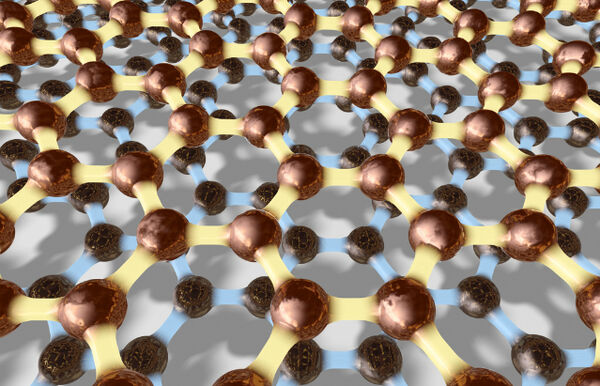
New study reveals unexpected softness of bilayer graphene
"In the study, published in the journal Physical Review B, the researchers showed that bilayer graphene, consisting of two layers of graphene, was noticeably softer than both two-dimensional (2D) graphene and three-dimensional (3D) graphite along the stacking direction. This surprising result differs from previous research which showed that 2D graphene, a flat single layer of carbon atoms arranged in a honeycomb structure had many of the same mechanical properties as 3D graphite, which is a naturally occurring form of carbon made up from a very weak stack of many layers of graphene. Measuring stiffness Graphene is a 2D material, but has 3D properties such as its stiffness in the ‘out-of-plane’ direction, perpendicular to the plane of the graphene sheets. The behaviour of π electrons within multilayer graphene determine its out-of-plane stiffness. In this study, the researchers found that when bilayer graphene is compressed out-of-plane, some π electrons are ‘squeezed’ through the graphene planes, which are impenetrable to small molecules such as water. This response makes the material softer and much easier to compress." [...]
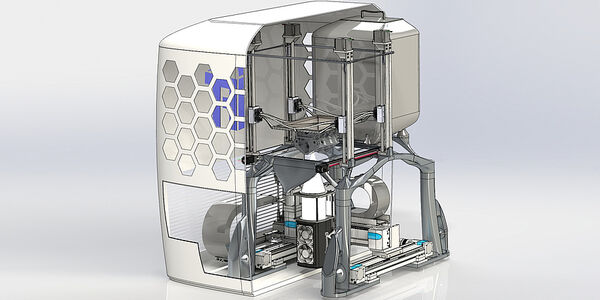
LED instead of laser or electron beam: New technology revolutionizes 3D metal printing
"A technology developed at Graz University of Technology uses LED instead of laser sources for the additive manufacturing of metal parts and optimizes 3D metal printing in terms of construction time, metal powder consumption, equipment costs and post-processing effort. Selective LED-based melting (SLEDM) – i.e. the targeted melting of metal powder using high-power LED light sources – is the name of the new technology that a team led by Franz Haas, head of the Institute of Production Engineering at TU Graz, has developed for 3D metal printing and has now applied for a patent. The technology is similar to selective laser melting (SLM) and electron beam melting (EBM), in which metal powder is melted by means of a laser or electron beam and built up into a component layer by layer. However, SLEDM solves two central problems of these powder bed-based manufacturing processes: the time-consuming production of large-volume metal components and the time-consuming manual post-processing. Reduced production time Unlike the SLM or EBM processes, the SLEDM process uses a high-power LED beam to melt the metal powder." [...]
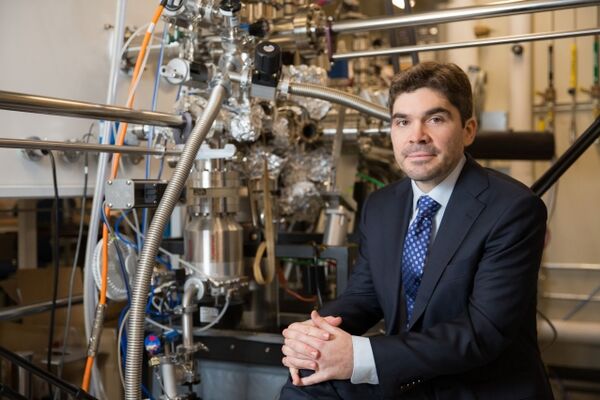
Finding the right quantum materials
"Associate Professor Joseph Checkelsky wins $1.7 million Emergent Phenomena in Quantum Systems Initiative grant to pursue search for new crystalline materials. The Gordon and Betty Moore Foundation has awarded MIT Associate Professor of Physics Joseph G. Checkelsky a $1.7 million Emergent Phenomena in Quantum Systems (EPiQS) Initiative grant to pursue his search for new crystalline materials, known as “quantum materials,” capable of hosting exotic new quantum phenomena. Quantum materials have the potential to transform current technologies by supporting new types of electronic and magnetic behavior, including dissipationless transmission of electricity and topological protection of information. Designing and synthesizing robust quantum materials is a key goal of modern-day physics, chemistry, and materials science. However, this task does not have a straightforward recipe, particularly as many of the most exciting quantum systems are also the most complex. “The starting point can be viewed as the periodic table of the elements and the geometrically allowed ways to arrange them in a solid." [...]
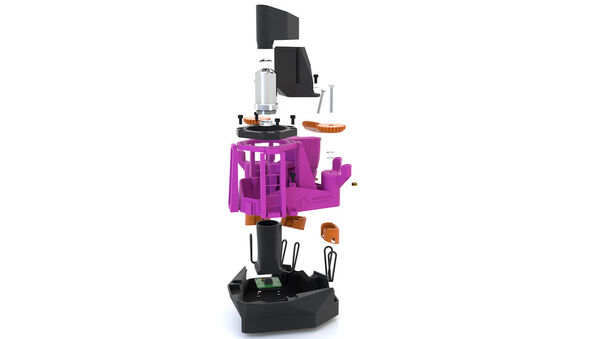
Print your own laboratory-grade microscope for £15
"For the first time, labs around the world can 3D print their own precision microscopes, thanks to an open-source design created at Bath. For the first time, labs around the world can 3D print their own precision microscopes to analyse samples and detect diseases , thanks to an open-source design created at the University of Bath. The OpenFlexure Microscope, described in Biomedical Optics Express, is a fully automated, laboratory-grade instrument with motorised sample positioning and focus control. It is unique among 3D-printed microscope in its ability to yield high-quality images. It has been designed to be easy to use, with an intuitive software interface and simplified alignment procedures. It is also highly customisable, meaning it can be adapted for laboratory, school and home use." [...]
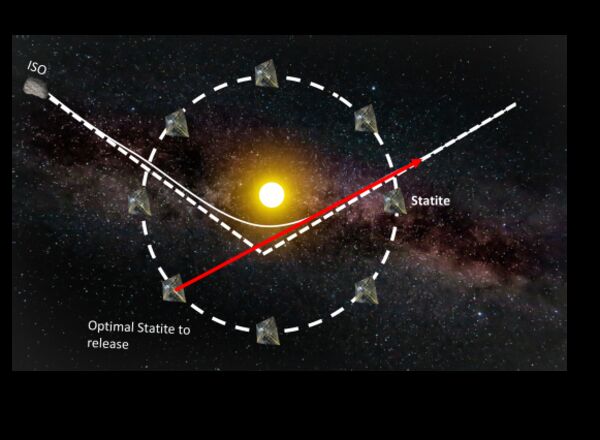
To catch an interstellar visitor, use a solar-powered space slingshot
"MIT research proposal for rendezvous missions with interstellar objects selected for NASA Innovative Advanced Concepts Program. In 2017, a telescope in Hawaii detected our first celestial visitor from another solar system — a big deal, since we haven’t quite figured out how to visit them ourselves yet. ‘Oumuamua, the cigar-shaped interstellar object (ISO) whose name roughly translates to “first distant messenger” in Hawaiian, will certainly not be the last visitor to pass through. If the story of our universe is written in the stars, even a tiny fragment traveling a long way for a short visit provides a tremendous opportunity for scientific discovery. But in order to get close enough to read the next piece of the story that wanders onto our doorstep, we will have to catch it first. To closely observe an ISO hurtling through space, time is of the essence." [...]
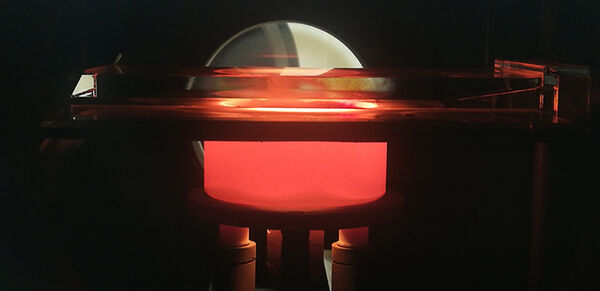
Pure red LEDs fulfill a primary goal
"First high-intensity, low-voltage red LEDs made from nitride semiconductors. Making pure red LEDs from nitride crystals is a goal that has so far frustrated engineers. However, these LEDs are vital for building the next generation of energy-efficient micro-LED displays to follow OLED displays and for creating lighting with color tuning. Now, for the first time, a team of electrical engineers at KAUST has succeeded in making these LEDs. "Electrical engineers can already make bright LEDs using varying materials to produce different colors. But to improve display technologies, engineers must integrate the three primary color LEDs, red, green and blue, onto one chip," explains Daisuke Iida, an electrical engineer at KAUST." [...]
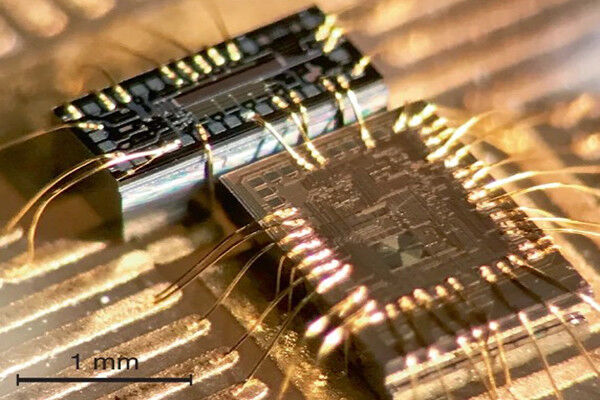
State-of-the-art lasers at the micro level
"New filter chips created by Penn engineers could enable high-quality lasers at a fraction of their current size and cost. Many emerging technologies rely on high-quality lasers. Laser-based LiDAR sensors can provide highly accurate scans of three-dimensional spaces, and as such are crucial in applications ranging from autonomous vehicles to geological mapping technologies and emergency response systems. High-quality lasers are also a key part of the high-speed, high-volume data centers that are the backbone of the internet. When assessing the quality of a laser, researchers look to the noise in a laser’s frequency, or the number of times the laser’s light wave toggles in each second. Low-quality, “noisy” lasers have more random variations in those toggles, making them useless for systems that are meant to return accurate measurements or convey densely packed information." [...]
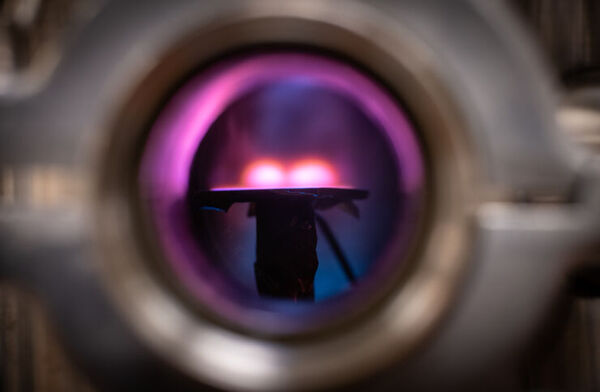
Plasma electrons can be used to produce metallic films
"Computers, mobile phones and all other electronic devices contain thousands of transistors, linked together by thin films of metal. Scientists at LiU have developed a method that can use the electrons in a plasma to produce these films. The processors used in today’s computers and phones consist of billions of tiny transistors connected by thin metallic films. Scientists at Linköping University, LiU, have now shown that it is possible to create thin films of metals by allowing the free electrons in a plasma take an active role. A plasma forms when energy is supplied that tears away electrons from the atoms and molecules in a gas, to produce an ionised gas. In our everyday life, plasmas are used in fluorescent lamps and in plasma displays." [...]
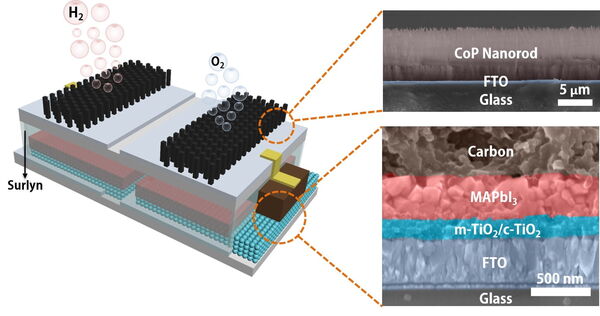
Water-splitting module a source of perpetual energy
"‘Artificial leaf’ concept inspires Rice University research into solar-powered fuel production Rice University researchers have created an efficient, low-cost device that splits water to produce hydrogen fuel. The platform developed by the Brown School of Engineering lab of Rice materials scientist Jun Lou integrates catalytic electrodes and perovskite solar cells that, when triggered by sunlight, produce electricity. The current flows to the catalysts that turn water into hydrogen and oxygen, with a sunlight-to-hydrogen efficiency as high as 6.7%. This sort of catalysis isn’t new, but the lab packaged a perovskite layer and the electrodes into a single module that, when dropped into water and placed in sunlight, produces hydrogen with no further input. The platform introduced by Lou, lead author and Rice postdoctoral fellow Jia Liang and their colleagues in the American Chemical Society journal ACS Nano is a self-sustaining producer of fuel that, they say, should be simple to produce in bulk. “The concept is broadly similar to an artificial leaf,” Lou said." [...]
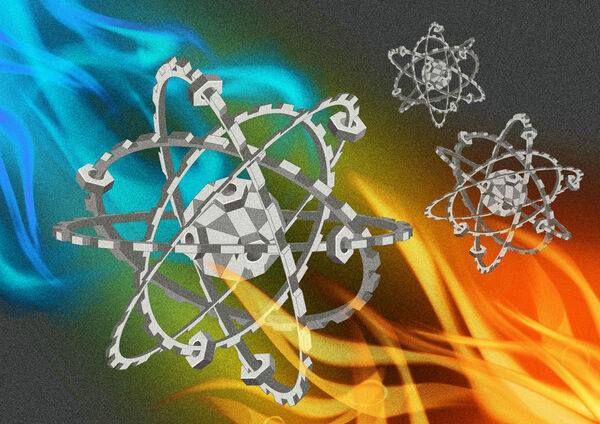
To Make an Atom-Sized Machine, You Need a Quantum Mechanic
"Researchers in Singapore turn a single atom into a quantum engine and a quantum fridge Here’s a new chapter in the story of the miniaturisation of machines: researchers in a laboratory in Singapore have shown that a single atom can function as either an engine or a fridge. Such a device could be engineered into future computers and fuel cells to control energy flows. “Think about how your computer or laptop has a lot of things inside it that heat up. Today you cool that with a fan that blows air. In nanomachines or quantum computers, small devices that do cooling could be something useful,” says Dario Poletti from the Singapore University of Technology and Design (SUTD). This work gives new insight into the mechanics of such devices." [...]
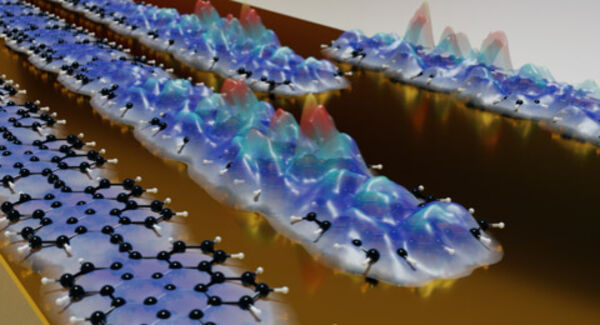
Towards metallic polymers by exploiting two faces of the same coin: topological order and π-conjugation
"Researchers at IMDEA Nanociencia, Universidad Autónoma de Madrid and Universidad Complutense de Madrid present a new strategy to fabricate quasi-metallic 1D polymers with atomic precision, in collaboration with The Czech Academy of Science, EMPA (Zürich, Switzerland) and RCATM (Olomouc, Czech Republic). This investigation within the framework of the ‘ERC Consolidator Grant ELECNANO’ and the ‘Comunidad de Madrid QUIMTRONIC project’ advances the possibility to design stable organic polymers with vanishing electronic bandgaps, whose applications range from molecular optoelectronics to quantum information technology. Organic (synthetic) metals attracted huge attention in the final decades of the last century due to their envisioned futuristic applications at affordable costs. This field was boosted by the early advances in polyacetylene polymers, which exhibited high conductivity upon doping and opened a new route towards organic electronics and the Nobel Prize to their discoveries. However, scientists found that dopants compromised the stability of the polymers, thus reducing their applications as synthetic metals in real devices. From a theoretical point of view, early efforts to understand the fundamental processes in the model trans-polyacetyene system resulted in the Su-Shrieffer-Heeger (SSH) model." [...]
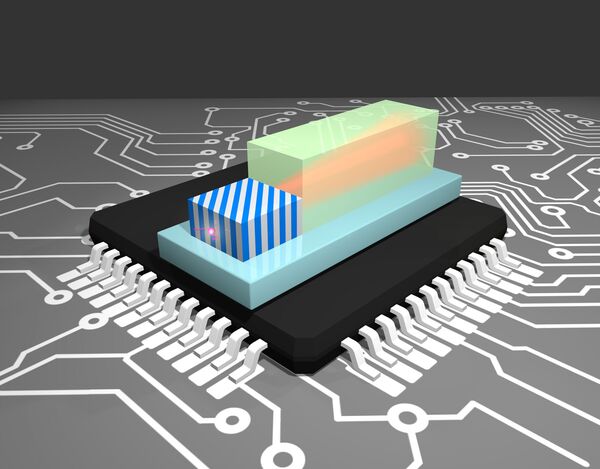
Broadband Enhancement Relies on Precise Tilt
"Quantum photonics involves a new type of technology that relies on photons, the elementary particle of light. These photons can potentially carry quantum bits of information over large distances. If the photon source could be placed on a single chip and made to produce photons at a high rate, this could enable high-speed quantum communication or information processing, which would be a major advance in information technologies. In this week’s issue of Applied Physics Reviews, from AIP Publishing, a simple on-chip photon source using a type of material known as a hyperbolic metamaterial is proposed. The investigators carried out calculations to show that a prototype using the hyperbolic metamaterial arranged in a precise way can overcome problems of low efficiency and allow for high repetition rates for on-chip photon sources. Until recently, single-photon sources have usually been made from self-assembled quantum dots in semiconductors or from materials, like diamonds, with structural defects." [...]
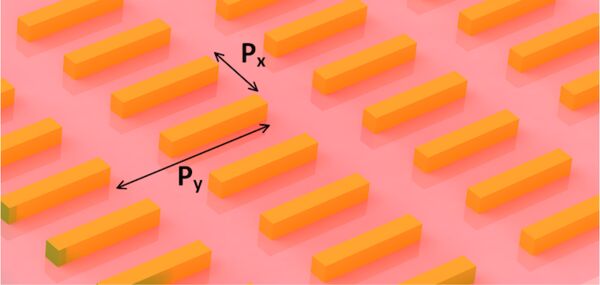
A new law for metamaterials
"Metamaterials, which are engineered to have properties not found in nature, have long been developed and studied because of their unique features and exciting applications. However, the physics behind their thermal emission properties have remained unclear to researchers—until now. In a paper published in Physical Review Letters, Sheng Shen, an associate professor in Carnegie Mellon's department of mechanical engineering, and his student Jiayu Li, a Ph.D. candidate, have created a new scale law to describe the thermal emission from metasurfaces and metamaterials. "With this new scale law uncovering the underlying physics behind the collective thermal emission behavior of metamaterials, researchers could easily utilize existing design and optimization tools to achieve desired thermal emission properties from metamaterials, instead of blindly searching for the best solution through mapping the entire design space," Li said. Thermal emission refers to the type of light a material emits. For example, humans emit infrared light, while glowing hot metal emits visible light." [...]
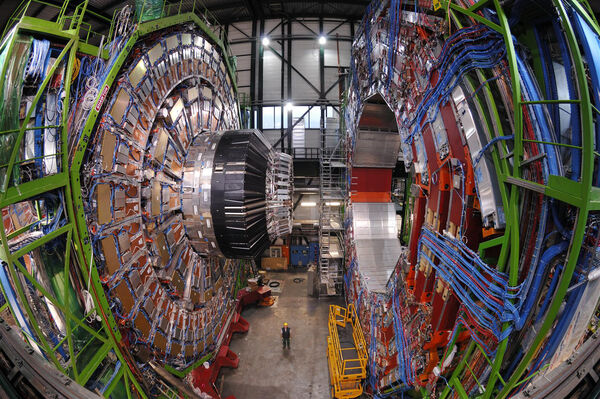
Scientists ‘at the bleeding edge’ with upgrade to CMS detector
"The huge detectors providing a window to the world’s tiniest particles are set for a $153 million upgrade, and a team of Purdue University scientists will play a key role — continuing the university’s decades-long legacy with the historic experiments at the European Organization for Nuclear Research, or CERN. Over the next five years, the international collaboration will improve by tenfold the sensitivity of the Compact Muon Solenoid, or CMS, detector, and prepare it to endure radiation levels equivalent to the core of a nuclear reactor when CERN increases the intensity of the proton beams in the Large Hadron Collider (LHC) — the largest and most powerful particle accelerator in the world. “The levels of radiation the detectors will face in this next phase of experiments presents a real challenge. We have to find materials that will survive this exposure for 10 years without turning to dust,” said Matthew Jones, the Purdue professor of physics and astronomy who is a principal investigator on the National Science Foundation-funded project led by Cornell University. “We are really at the bleeding edge, and the technological advances from this project will inform fields spanning space exploration, computer science and optics. But our goal is to understand the nature of the fundamental particles from which our world is built.” From smashing particles at near the speed of light to the discovery of the Higgs particle and celebration of the Nobel Prize that followed, Purdue researchers have persistently pursued the science alongside their international colleagues at CERN." [...]
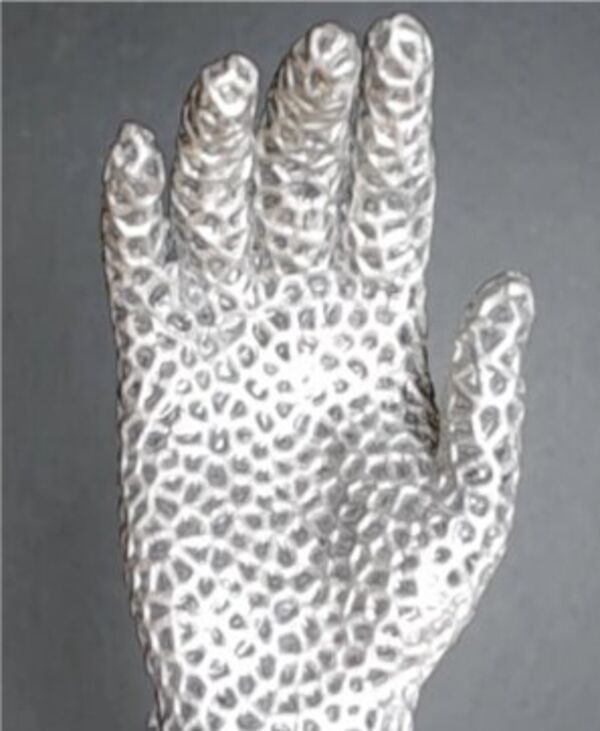
Liquid Metal Research Invokes ‘Terminator’ Film — But Much Friendlier
"Watson team uses new lattice material to create models that regain shape after being crushed Pu Zhang likes to compare his team’s research on liquid metals to the Terminator — specifically 1991’s Terminator 2: Judgment Day, in which a killer robot sent from a grim future can transform into anyone and anything in pursuit of its human prey. When told maybe that’s not the best comparison, Zhang laughed and made a confession: “To be honest, I’ve never watched that movie!” Zhang — an assistant professor of mechanical engineering at the Thomas J. Watson School of Engineering and Applied Science — has much more benign plans for his latest study, which will be published in the May issue of the journal Additive Manufacturing. Working with PhD students Fanghang Deng and Quang-Kha Nguyen, Zhang developed what he calls “the first liquid metal lattice in the world,” which is made from Field’s alloy. The mix of bismuth, indium and tin — named after its inventor, Simon Quellen Field — becomes liquid at the relatively low melting point of 62°C (144°F). Field’s alloy is currently used as a liquid-metal coolant in nuclear engineering, among other applications, but the Watson team demonstrates other potential applications. They combined the metal lattice material with a rubber shell through a hybrid manufacturing process." [...]

ESO Instrument Finds Closest Black Hole to Earth
"A team of astronomers from the European Southern Observatory (ESO) and other institutes has discovered a black hole lying just 1000 light-years from Earth. The black hole is closer to our Solar System than any other found to date and forms part of a triple system that can be seen with the naked eye. The team found evidence for the invisible object by tracking its two companion stars using the MPG/ESO 2.2-metre telescope at ESO’s La Silla Observatory in Chile. They say this system could just be the tip of the iceberg, as many more similar black holes could be found in the future. "We were totally surprised when we realised that this is the first stellar system with a black hole that can be seen with the unaided eye,” says Petr Hadrava, Emeritus Scientist at the Academy of Sciences of the Czech Republic in Prague and co-author of the research. Located in the constellation of Telescopium, the system is so close to us that its stars can be viewed from the southern hemisphere on a dark, clear night without binoculars or a telescope." [...]

New Ultrafast Camera Takes 70 Trillion Pictures Per Second
"Just about everyone has had the experience of blinking while having their picture taken. The camera clicks, your eyes shut, and by the time they open again, the photo is ruined. A new ultrafast camera developed at Caltech, were it aimed at your lovely face, could also capture you looking like a dunce with your eyes shut, except instead of taking just one picture in the time it takes you to blink, it could take trillions of pictures. The new camera developed in the lab of Lihong Wang, Bren Professor of Medical Engineering and Electrical Engineering in the Andrew and Peggy Cherng Department of Medical Engineering, is capable of taking as many as 70 trillion frames per second. That is fast enough to see waves of light traveling and the fluorescent decay of molecules. The camera technology, which Wang calls compressed ultrafast spectral photography (CUSP), is similar in some respects to previous fast cameras he has built, such as his phase-sensitive compressed ultrafast photography, or pCUP, device, which can take 1 trillion frames per second of transparent objects and phenomena." [...]
Documentação
A documentação é parte essencial do processo de aprendizagem e a Internet além de artigos interessantes de explorar também tem alguma documentação em formato PDF interessante de ler. Todos os links aqui apresentados são para conteúdo disponibilizado livremente pelo editor do livro.
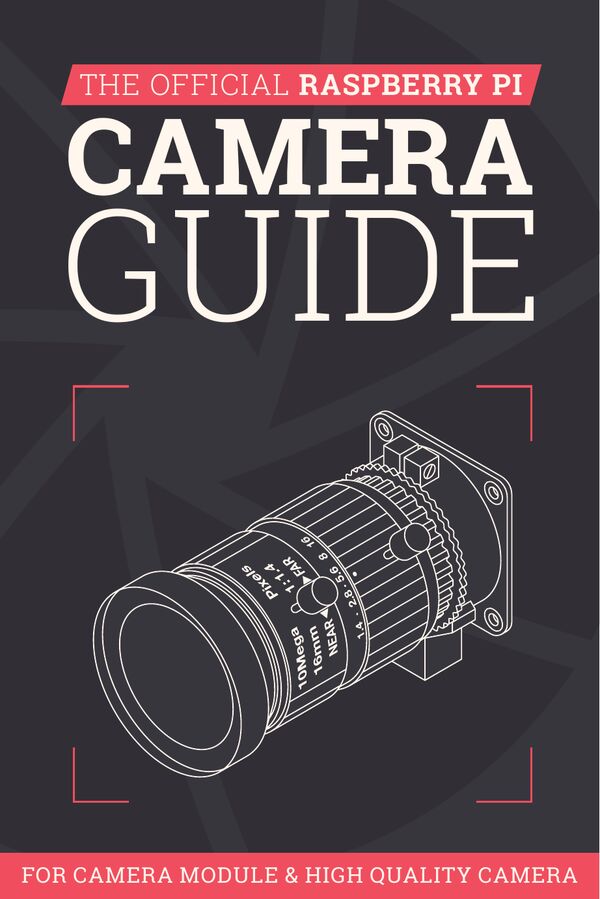
Raspberry Pi Camera Guide
"Take pictures and shoot video with your Raspberry Pi. Connecting a High Quality Camera or Camera Module turns your favourite credit-card-sized computer into a powerful digital camera. Learn how to set up and control the camera to capture stills and video footage. Discover the numerous modes and effects available, and use the camera in a variety of exciting projects across 17 packed chapters: Set up the new High Quality Camera, attach a lens, and start capturing stunning hi-res images Take selfies and shoot stop-motion videos Build a wildlife camera and also an underwater one Make a smart door with a video doorbell Set up a security camera to monitor your home And much, much more! " [...]
Projetos Maker
Diversos Projetos interessantes.
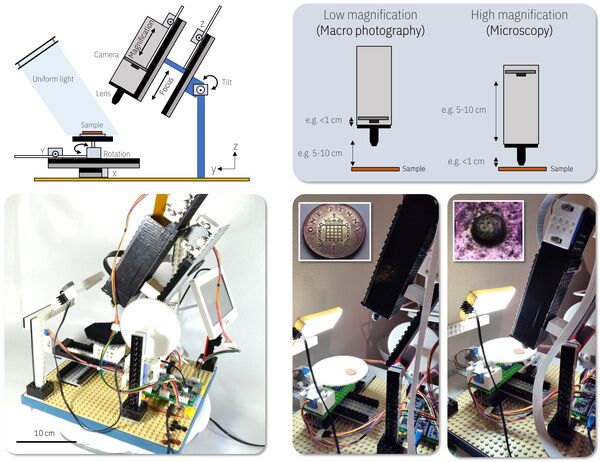
MicroscoPy
"An open-source MICROSCOPE built using LEGO bricks, 3D-printing, Arduino and Raspberry Pi Key Features - Fully motorized: Camera angle, sample position, magnification and focus can be adjusted precisely using six stepper motors. - Modular: Stages and modules can be arranged in any configuration depending on the application. - Versatile: Uniform illumination guarantees high quality imaging for a variety of samples with reflective or transparent surfaces. - Wide magnification range: Samples with features from several centimeters to several micrometers can be imaged without changing the objective lens. - Low-cost: The whole assembly costs from $200 to $400 depending on the features and the vendors of the electronic components. - The microscope uses a Raspberry Pi mini-computer with an 8MP camera to capture images and videos." [...]
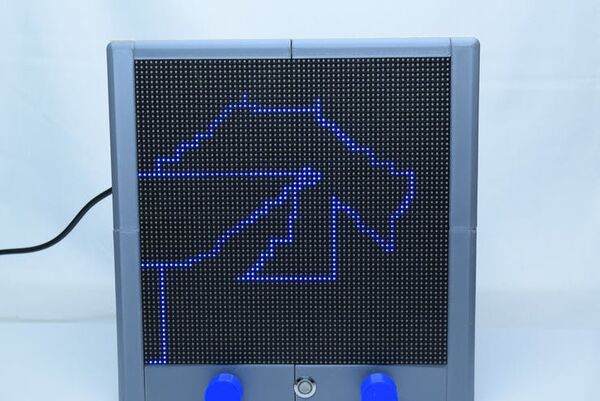
Pix-a-Sketch - A Virtual Etch-a-Sketch on an LED Matrix
"Use two rotary encoders to draw whatever picture your heart desires, and then shake it to erase the image — just like the real thing! This project was created as a throwback to a much simpler toy, the Etch-a-Sketch, but instead of moving a tiny stylus to wipe aluminum particles off of a glass surface, this one plots pixels onto an RGB matrix. " [...]
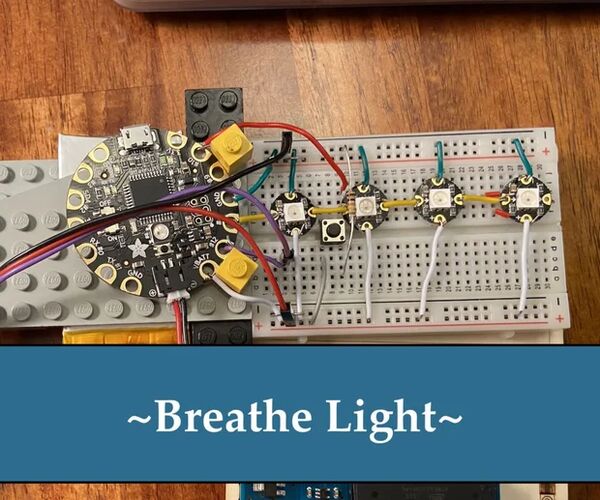
Breathe Light Anxiety Device With Heart Rate Monitor
"With the world getting busier, everyone is in an increasingly high-stress environment. College students are at an even higher risk of stress and anxiety. Exams are especially high-stress periods for students, and smartwatches with breathing exercise settings aren't typically allowed to be used during exams since they can also text and connect to the internet. "Breathe Light" is a simplistic anxiety-centered device that does not have internet connectivity and will be welcomed in exams. This device is not user-specific which allows for it to be easily adapted to any person needing anxiety control. By using a series of four NeoPixel LEDs, the user will be able to follow steps to perform breathing exercises and also track their heart rate before and after the exercises to determine if their stress levels are lowering." [...]
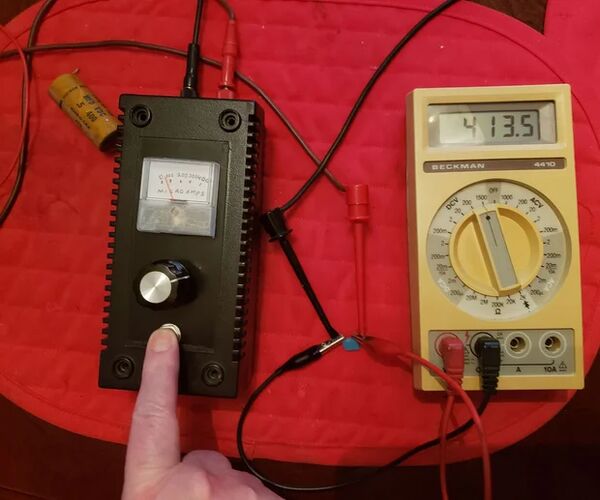
Capacitor Leakage Tester
"This tester can be used to check smaller value capacitors to see if they have leakage at their rated voltages. It can also be used to test insulation resistance in wires or to test a diode's reverse breakdown characteristics. The analog meter on the front of the device gives an indication of the current going through the device under test DUT and the multimeter gives the voltage across the DUT. NOTE OF CAUTION: THIS DEVICE DEVELOPS VOLTAGES UP TO 1000 VOLTS WHICH CAN BE LETHAL IF THIS DEVICE IS MISUSED. ONLY BUILD THIS DEVICE IF YOU UNDERSTAND THE SAFETY PRECAUTIONS FOR WORKING WITH HIGH VOLTAGES. Supplies: All the pieces used here I had on hand and most came from salvaged parts from other devices or bits and pieces I acquired long ago." [...]
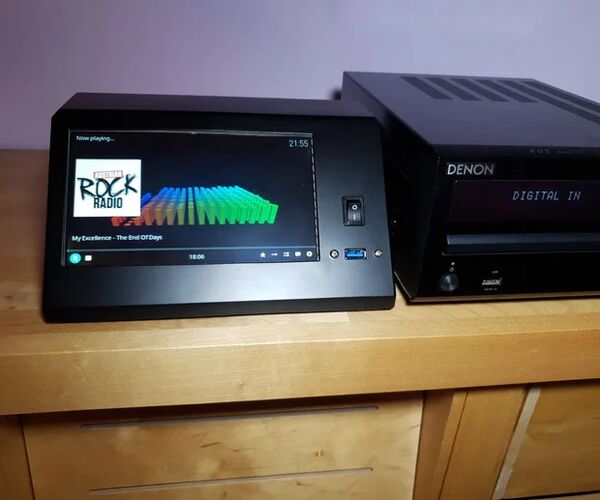
Digitalize Your Hi-fi System
"In this Instructable I would like to show you how I digitized my analog hi-fi system and thus realized web radio, access to the music collection stored on my NAS, etc. The implementation is mainly based on a Raspberry Pi, a Hifiberry HAT and a touchscreen. These components are built into a specially developed 3D printed housing, which is designed to match the appearance of the hifi system. Since my audio device also has a digital input and the prices for a digital sound card are about the same as for an analog version, I decided to use a digital connection via an optical cable. To be able to use the interfaces of the Raspberry PI (RJ45, USB A, Micro USB power connector, ...) and still get a professional looking device, I wanted to connect the ports to the housing walls with appropriate cables and jacks. Supplies: Rasberry Pi (I used Model 3B+) + micro SD card Power supply (e.g." [...]
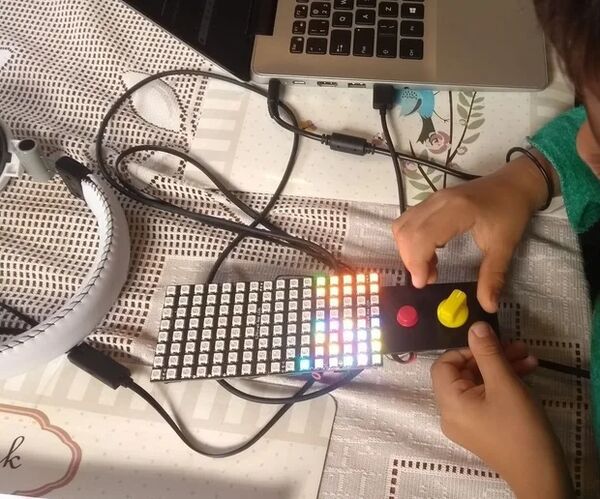
Arduino Mastermind Game
"I created this little game as a hobby for my children during the Covid-19 quarantine. I had already seen some versions for two players on the Internet. But I wanted a version in which the player would challenge Arduino itself, because then I could turn the game into a puzzle for Escape Room. Supplies: Arduino Leonardo x 1 NeoPixel NeoMatrix x 2 Rotary Encoder with Push-Button1 Buzzer x 1 Battery Holder, 18650 x 2" [...]
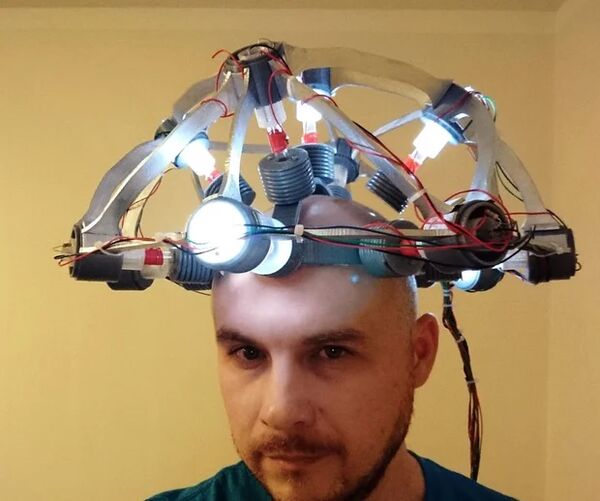
Back to the Future Mind Reading Hat
"I have a scientific background and since I remember I was into sci-fi too. Few years ago, I have discovered another passion which is 3D printing. With time I have learnt to design and build my own printers and then I started to learn CAD design. Couple years ago I found out about Fusion 360 and I fall in love instantly. I'm still a beginner and I have a lot to learn, but Fusion 360 allowed me to recreate props from my favorite movies. In this instructables I will show you how I designed and 3D printed mind reading helmet from classic sci-fi trilogy 'Back to the Future' Supplies:- PLA - 2m x 10mm OD perspex tube (3D printed alternative available) - Arduino Nano - 13 x 5mm White LED's - 13 x 220 Ohm 0.5W resistors - 9V battery - 9V battery clip - On/off slide switch - Red wire (1mm to 3mm thick) - Grey wire (5mm to 8mm thick) - Equipment wire - Cable ties - Super glue (I recommend gorilla glue) - Solder Tools: - 3d Printer - Soldering iron - Screwdriver Software: - Arduino IDE - Cura (or any other slicing software)" [...]
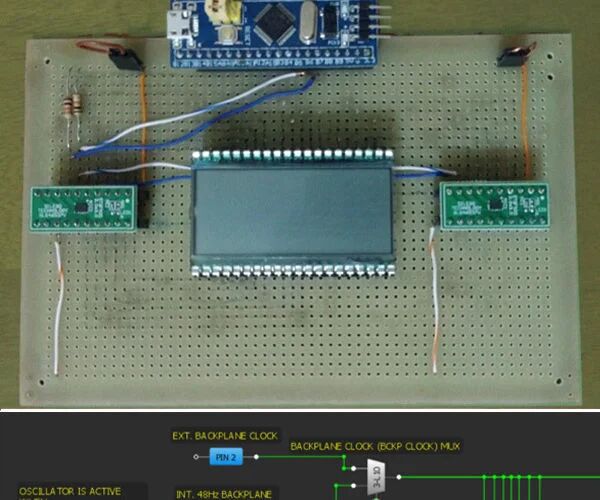
How to Make Static LCD Driver With IC Interface
"Liquid Crystal Displays (LCD) are widely used for commercial and industrial applications because of their good visual properties, low cost and, low power consumption. These properties make the LCD the standard solution for battery-operated devices, like portable instruments, calculators, watches, radios, etc. However, to properly control what the LCD shows, the LCD’s electronic driver must generate appropriate voltage waveforms to LCD pins. The waveforms should be AC (alternate current) in nature because DC (direct current) voltages will permanently damage the device. The appropriate driver would source these signals to LCD at a minimum of power consumption. Two types of LCDs exist, the Static, with only one backplane and one pin for individual segment control and, the Multiplexed, with multiple backplanes and multiple segments connected for each pin." [...]
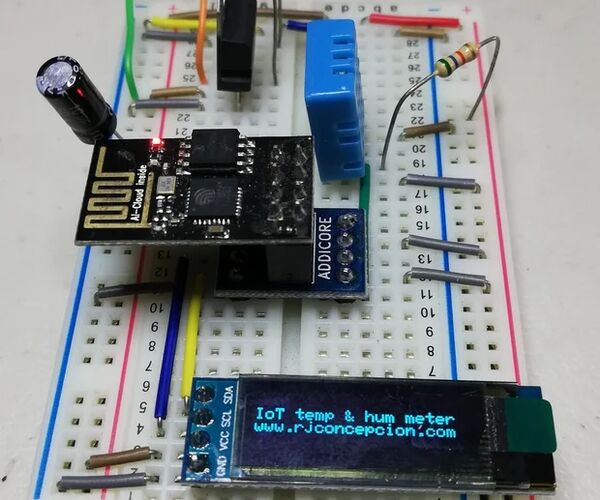
IoT Temperature & Humidity Meter With OLED Screen
"Check temperature and humidity in an OLED screen any time you want and at the same time collect that data in an IoT platform. Last week I published a project called Simplest IoT temperature and humidity meter. That is a good project because you can collect and graph temperature and humidity in an IoT platform like Adafruit IO. But what about if I want to know the temperature right now? Well, I had to enter Adafruit IO and see it. Then I thought If I could put a screen and see the temperature without entering Adafruit." [...]
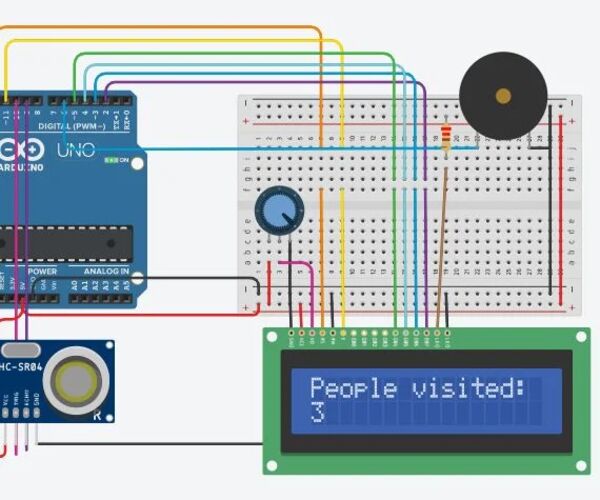
Bi-Directional Visitor Counter Using Single Ultrasonic Sensor With LCD on TinkerCad
"Often we see visitor counters at the stadium, mall, offices, classrooms etc. Today we are here with a project with bidirectional visitor counter by using Arduino Uno. It is a very interesting project for hobbyists and students for fun as well as learning. The project of Digital visitor counter is based on the interfacing of some components such as sensors, motors etc. with Arduino microcontroller. This counter can count people in both directions." [...]
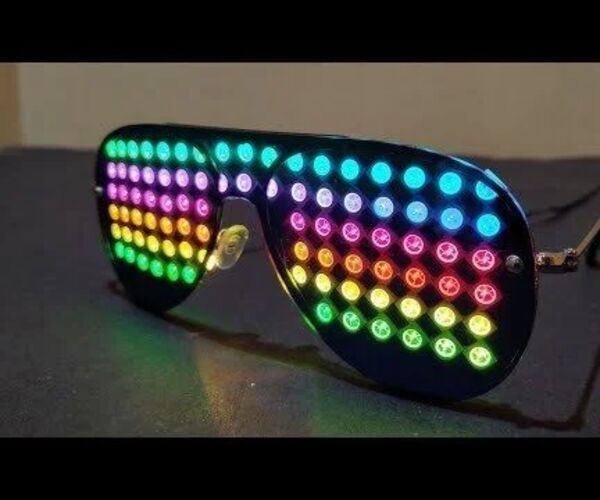
DIY | RGB Goggles
"Hey! I have made a RGB Goggles using WS2812B LEDs and Arduino Nano.The Goggles have many animations they can be controlled using a mobile app.The app can communicate with arduino through Bluetooth Module. Supplies: Arduino Nano (1) WS2812B LEDs (88) HC06 Bluetooth Module (1) 3.7V Battery (1) On/Off Switch (1) Pair Of Goggles" [...]
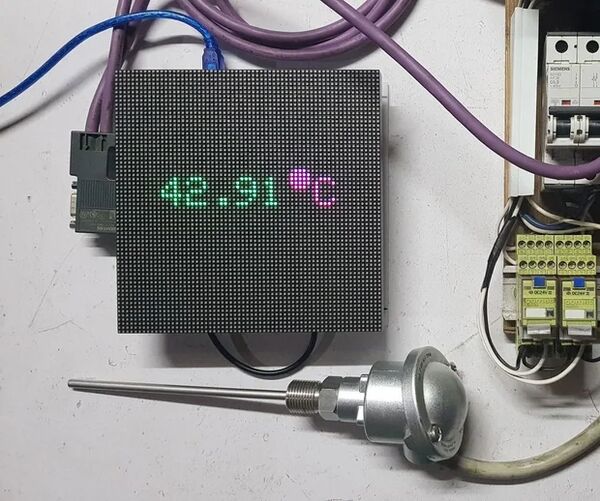
Integrating Arduino Into PLC System
"I intend to make an automated system for my home with a combination of PLC SIEMENS and ARDUINO. I think we can combine their own strengths to make the automation system running in stability, optimization and acceptable price. So I took times to consult, study and perform some below experiments before applying them to my home. Toogle a lamp 220 VAC from touch button of Arduino via Profibus-DP. Display the PT100 temperature value on the 64x64 led matrix via Profibus-DP" [...]
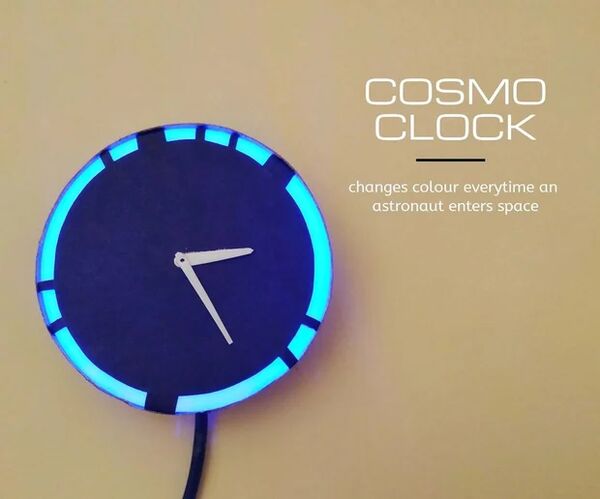
Cosmo Clock - Changes Color Everytime an Astronaut Enters Space
"Hi! Are you a space enthusiast? If yes then hi-fi! I love space and astronomy. Obviously I'm no astronaut to go up there and have a closer look at the universe. But every time I find out that a person from earth has traveled to the sky, I get inspired to explore more." [...]

Modular Desk Organiser
"If you're like me, working/studying from home has taken a toll on the organisation of your desk. Because I'm using it so often, I don't bother putting my notebooks, pens, paper and other random items away and they just end up lying there forever. Now, I have to search a good 10 minutes just in order to find that one green notebook. This organiser is modular and can be rearranged to fit whatever space you have available. This was inspired by a similar organiser (in a larger scale, called Konnex) I saw online and I just thought it was a really cool idea and wanted something like it in my own home. You can also use the same method to create it in a larger scale and use it as a shelf." [...]
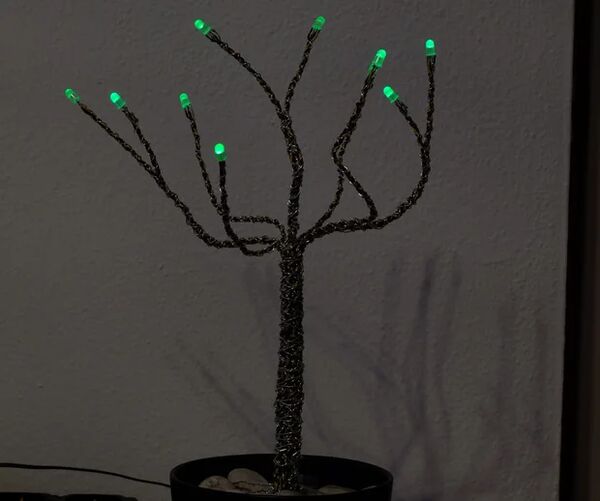
RGB-LED Wire Tree
"I want to a share with you my RGB-LED wire tree. One evening I remembered building wire trees as a kid. Nowadays I really enjoy building small electronic projects with microcontrollers similar to arduino, especially with LEDs. So i thought to myself, why not combine both and the idea of an LED wire tree was born. First I checked, if someone had already done something like this before but I didn't find what I was looking. I could mainly find LED wire trees that show one colour." [...]
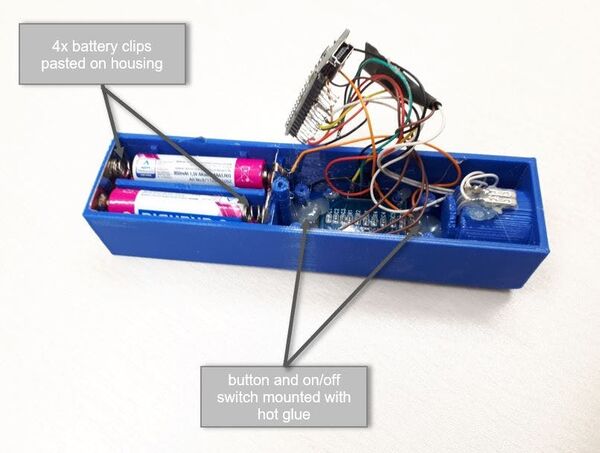
Tension Meter for Saw Blades on Band Saws with Arduino
"Setting up a new blade for a band saw is sometimes a hard job. But there could be help with Arduino power. Setting the correct blade tension is not easy. The band saw is the Diva of saws! If tension is too small, the saw blade starts to flutter, the cut becomes unclean and requires additional grinding. If the tension is too high, this reduces the service life of the blade." [...]
Face Tracking Robot with an ESP32-CAM
"An auto-balancing robot that can track your face and follow you around a room Elegoo kindly sent me a Tumbller self-balancing robot for my project. It’s easy to put together and comes with clear instructions. " [...]
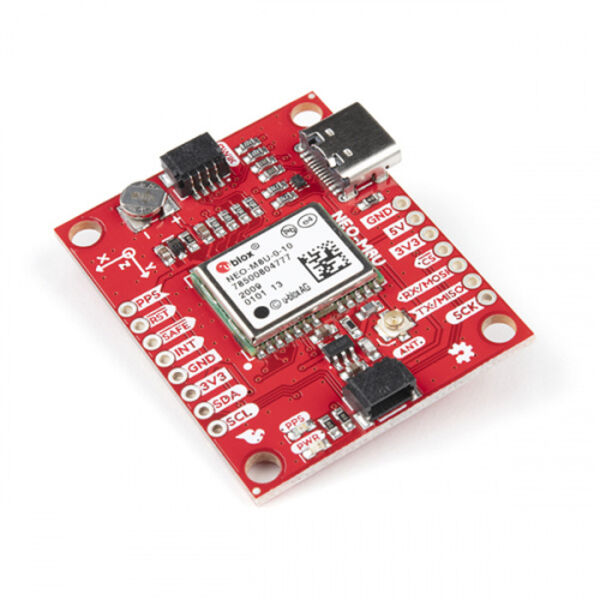
SparkFun GPS Dead Reckoning NEO-M8U Hookup Guide
"The u-blox NEO-M8U is a powerful GPS units that takes advantage of untethered dead reckoning (UDR) technology for navigation. The module provides continuous positioning for vehicles in urban environments and during complete signal loss (e.g. short tunnels and parking garages). We will quickly get you set up using the Qwiic ecosystem and Arduino so that you can start reading the output! " [...]

Cryptic Wall Clock
"The passage of time is something we cannot control. It happens at the same rate if we are sleeping, awake, bored, or engaged. With current events, it's important to remember time will pass. While we are waiting for time to pass, why not make something that makes the passage of time more appealing to watch. This clock was inspired by the Mengenlehreuhr found in Berlin, Germany and can be read in the same manner. Just like the original, it tells the time by means of illuminated, colored fields." [...]
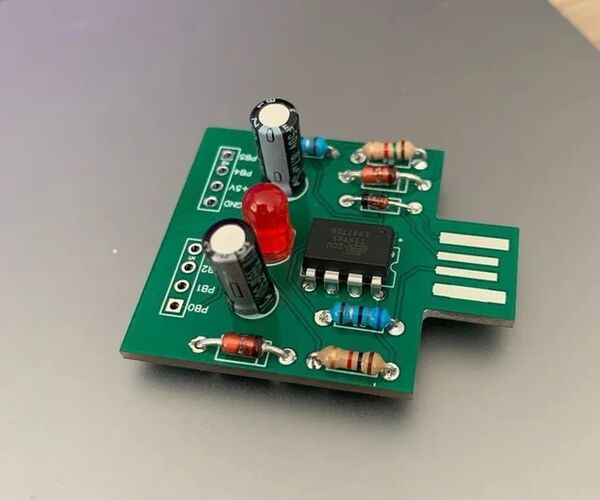
How to Construct a Mini USB Arduino
"According to information from the official Instagram of the Arduino company, there are approximately 30 million active users of the platform. All of them are spread all over the world. With this large number, we realize how much the platform has great influence and use by many people. One of the factors driving the platform's rapid growth is why it is open-source and open-hardware, meaning anyone can create their own Arduino. Thus, with a wide variety of boards in the world market, Arduino has become popular and continues to reach more and more people daily. With this possibility of creating new cards, we present the Mini USB Arduino." [...]
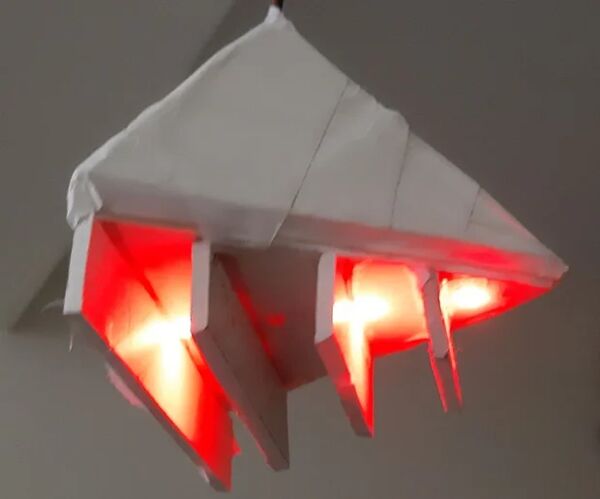
The Pendant Lamp Clock
"Hi everyone. Imagine the moment when someone asks you the time and you tell the exact time looking at your pendant lamp!! Today I will show you how to make an amazing pendant lamp which tells you the time. It has 4 RGB LED which show time in binary form by turning on and off and changing color. This project is fairly easy to build yet amazing. Supplies:Tools: 1." [...]
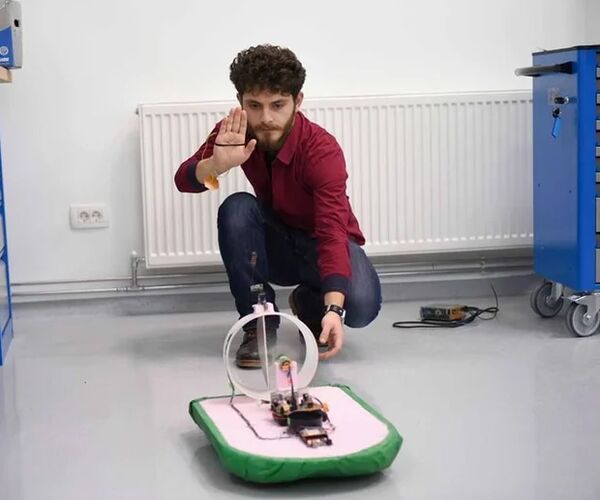
Remote Controlled Hovercraft
"A lot of people create remote controlled cars, drones and lots more, but how often do you hear someone create a Hovercraft? In this in instructable I'm going to show you how to create your own hovercraft that will be remotely controlled and can operate on surfaces such as: Land Water Snow Construction materials: XPS foam board (width: 50 cm, length: 60 cm, thickness: 1 cm) Flexible skirt (width: 50 cm, length: 60 cm) Circular plastic container (diameter: 20-25 cm, height: 10-15 cm) The base of the project will be made from the XPS foam board, the base will require these dimensions (length: 53 cm,width: 38 cm), but i suggest you to take the XPS foam board with the dimensions listed above, as the excess material will be used later on. Tools: Hot glue gun Soldering iron Drill machine Cutting Blade (Scalpel) Electronic and the rest of components required: Arduino Uno R3 Micro Servo 9G Infrared Transmitter (TV remote) Infrared Receiver DC motor (12 V) x 2 (one of them can be taken from hair dryers as they come with propellers) Transistors TIP120 x 2 Voltage regulators (IC7812, IC7805) Resistors 2.2 Kilo Ohm x 2 Capacitors (100 uF x 2, 10 uF) x 2 Lithium Ion Batteries 18650 (3.7 volt, 1.5 Amp) x 6 Perfboard (10 cm x 5 cm) Propeller (Broken helicopter RC toy) (this one will be placed to the other dc motor to make air thrust) After you acquire all the components listed above you can start making your project. Now you have everything you need! " [...]
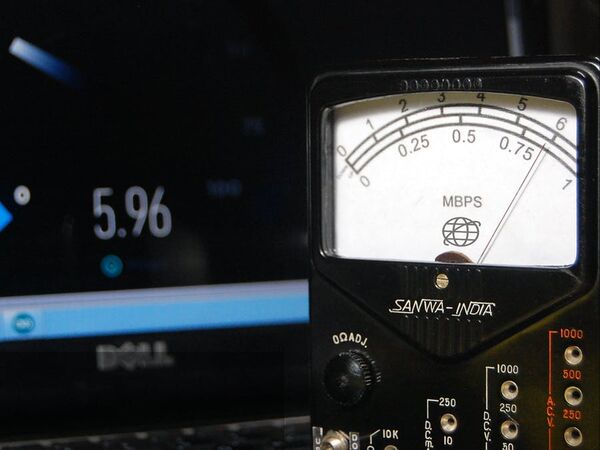
Internet Speedometer
"A fun way to monitor your internet traffic! With complete lockdown going on in India, everything including mail services has been closed. No new PCB projects, no new components, nothing! So to overcome the boredom and to keep myself busy, I decided to make something from the parts which I already have at home. I started searching from the pile of electronics junk and found an old, broken analog multimeter. I salvaged the 'meter movement' from it and decided to display some kind of information but didn't exactly know what." [...]
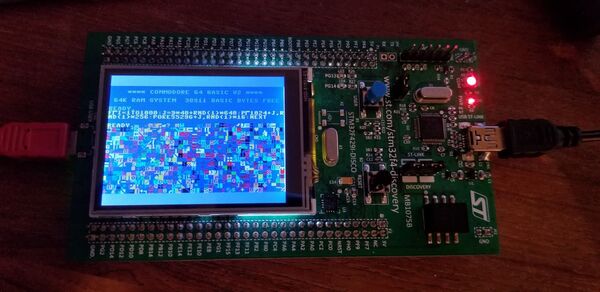
Commodore 64 for STM32F429 Discovery board
"Yeah, the LCD is tiny at 2.4", and the emulation runs about 15% slower than an NTSC C64. But it's running on a small embedded board that's available for under $30 US (DigiKey, Mouser, ...) including mounted LCD display and USB OTG jack. Just add keyboard, OTG USB adapter, and power supply. This is a port of my portable C64/6502 emulator for terminal console, which was a port of my Commodore/6502 emulator for Windows Console. But this time, I dropped the console part, and went for real video (LCD) and USB keyboard support. Hello PETSCII!" [...]
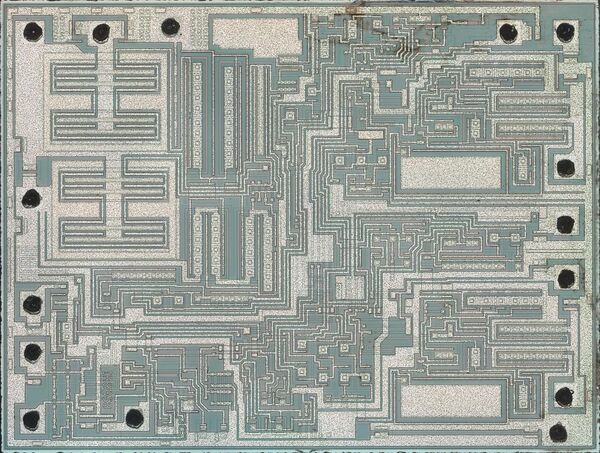
Reverse-engineering the audio amplifier chip in the Nintendo Game Boy Color
"The Nintendo Game Boy Color is a handheld game console that was released in 1998. It uses an audio amplifier chip to drive the internal speaker or stereo headphones. In this blog post, I reverse-engineer this chip from die photos and explain how it works.1 It's essentially three power op-amps with some interesting circuitry inside. The photo above shows the chip's silicon die as it appears under a microscope. The white lines are the chip's metal layer, connecting the components. The silicon itself appears greenish and is underneath the metal." [...]
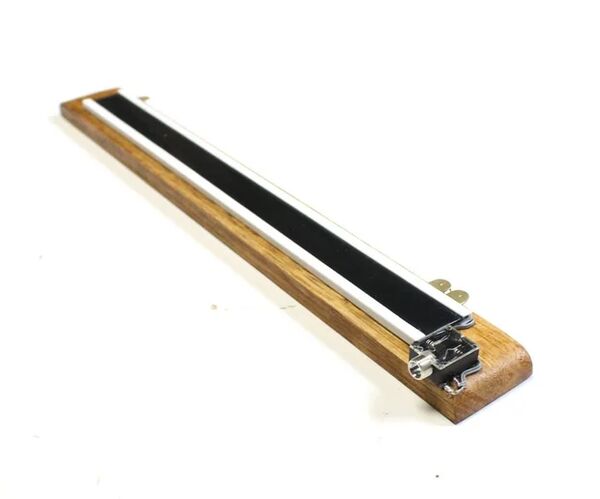
Make a Ribbon Controller
"Ribbon controllers are a great way to control a synth. They consist of a touch-sensitive strip that lets you control pitch continuously. The electrically conductive strip called 'velostat' that responds to changes in voltage or resistance caused by moving your finger along its surface. These changes in voltage can be applied to any number of voltage-controlled oscillators, filters or amplifiers in analog synthesizers. The basic design of a ribbon controller is fairly simple. It acts as a linear potentiometer that generates different control voltages depending on where it is touched." [...]
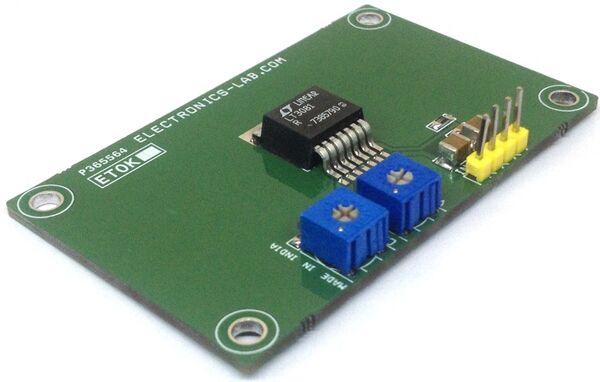
0-6V @ 1.5A Adjustable Power Supply With Current Limit Using LT3081
"This is a simple power supply that provides an adjustable output voltage with an adjustable current limit. In such a small package, both these features make the power supply unique. The output voltage is adjustable range 1.2V to 6V DC and current limit range adjustable up to 1.5A, Input Supply is 12V-30V DC.The LT3081 is a 1.5A low dropout linear regulator designed for rugged industrial applications. Key features of the IC are the extended safe operating area (SOA), output current monitor, temperature monitor, and programmable current limit. The LT3081 can be paralleled for higher output current or heat spreading. The device withstands reverse input and reverses output-to-input voltages without reverse current flow." [...]
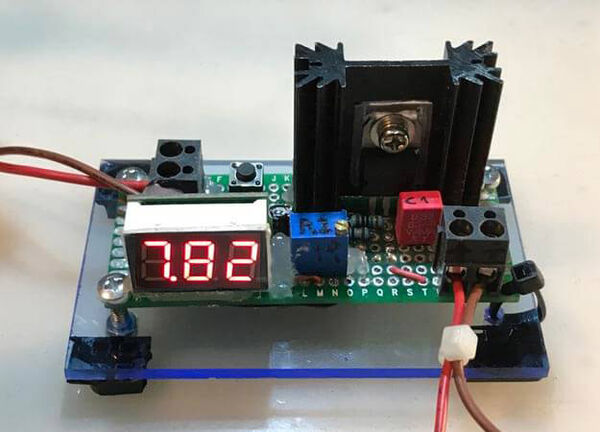
LM350 3A Adjustable Voltage Regulator
"The LM350 is a tried and true 3A adjustable voltage regulator. It accepts an input voltage up to 35V and can deliver an output voltage between 1.25 and 33V. It is rugged beyond belief. Where fairly beefy step-down converters go up in smoke, the LM350 just takes a nap. And a nap is infinitely better than a plume of smoke. LM350 can also be used to limit current though that requires a separate LM350/LM317 in series with our voltage regulator." [...]
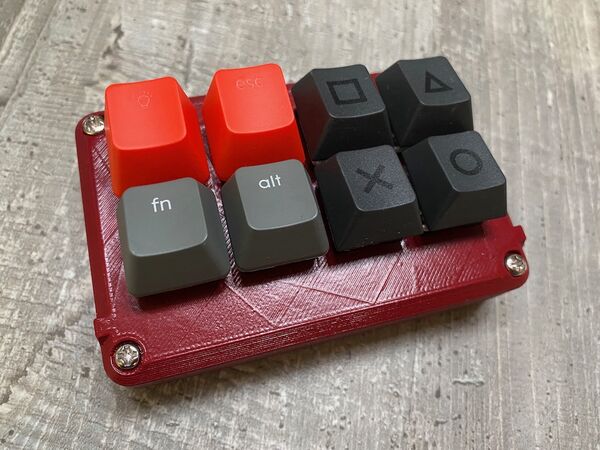
Build a simple USB HID Macropad using Seeeduino Xiao & CircuitPython
"I recently got into Mechanical Keyboards and thought it would be fun to build my own 8 key mechanical macropad. The process is pretty easy and made even easier with the addition of the Seeduino Xiao which is super cheap and has enough inputs to create a decent sized keypad without the complexities of figuring out how to code a matrix (which if you feel like doing you could create a pad of up to 25 keys with this tiny device!). Lets do this! I’ll include the basics, but you can modify this project extensively, using your own switches (I used mechanical keyboard keys but you could use tactile switches, arcade buttons or even a foot pedal if you prefer). This guide assumes a basic amount of knowledge of electronics. Nothing here is rocket science but you’ll need to know how to trim wires, do some basic soldering and edit text documents." [...]
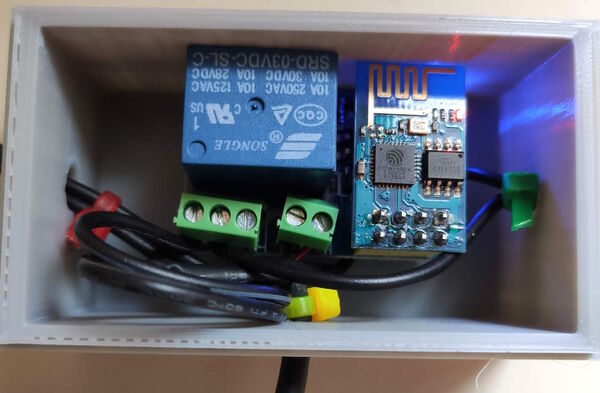
Make an automatic router re-starter for $3 with an ESP8266 01 and single relay
"The weakest link of our digital lives at home is the pipe into our house and the device it's attached to. Our cable-modem allows our equipment to communicate with the outside world. Like all computers, modems are prone to crashing; some of us need to restart at least once a week. Recently my modem began disconnecting once a day, and because I can't face the hassle of setting up a new one, I decided on a workaround. If a sensor could detect when the modem disconnected, it could power-cycle by itself. The project ended up being much simpler and cheaper than I expected." [...]

CLUE Light Paint Stick with CircuitPython
"Create high-fidelity light paintings with an Adafruit CLUE, CircuitPython, and DotStar LEDs Light painting is an “in-camera” photographic effect (that is, not composited after-the-fact) using long exposures and moving light sources. The technique dates back over a century, most of that time relying on small flashlights or incandescent bulbs…but once someone had the idea to use a whole row of computer-controlled LEDs, it quickly became one of the go-to maker projects, one we’ve visited many times. Any time a new technology comes along…Arduino, Raspberry Pi, CircuitPython…light painting is a fun and creative way to put that tech through its paces. " [...]
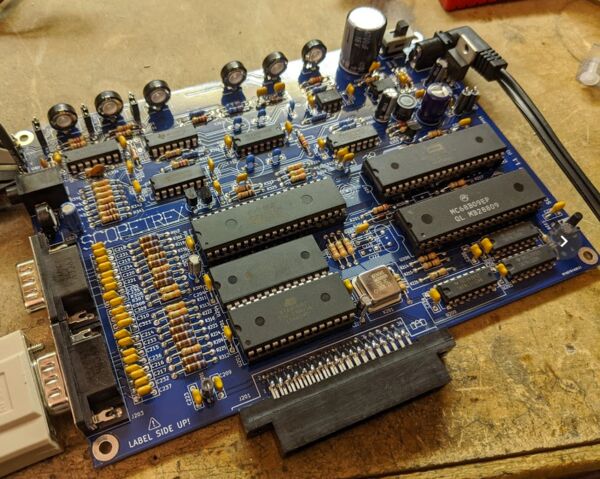
SCOPETREX vector gaming on your oscilloscope!
"Vector Gaming on Your Oscilloscope! Have you ever wanted to buy a Vectrex, but you can't afford the high prices on auction sites? Do you already have a hoard of Vectrexes, but want another one? Well now you can build your own! The SCOPETREX is basically a Vectrex on a single board without a monitor. To play games, you have to connect it to an oscilloscope or an XY monitor." [...]

GenDumper
"An open-source Sega Genesis / Mega Drive cart dumper. This repository includes the sources for the hardware, the firmware running on the hardware, and computer programs used to interface with the dumper. " [...]
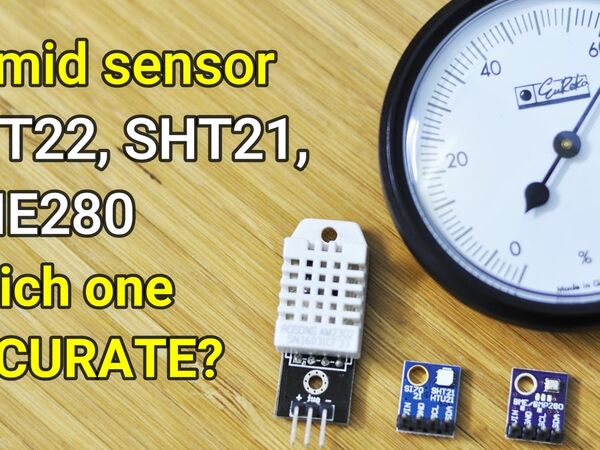
Humidity Sensor Calibration
"This experiment will reveal ability measuring of Humid sensor DHT22, SHT21, BME280. Also mention about how to calibrate them I've got 3 sensors that can measure relative humidity of the air: BME280, SHT21, DHT22. They stated ability of measuring with accuracy +/-3% from range 20 to 80% However, when testing in same condition for 3 sensor, I got 3 different results. Maybe one of them has reading correctly, or none of them is correct. So I decide to test it with some equipement. I hope my experiment can help some one to make this kind of sensor to be correct." [...]
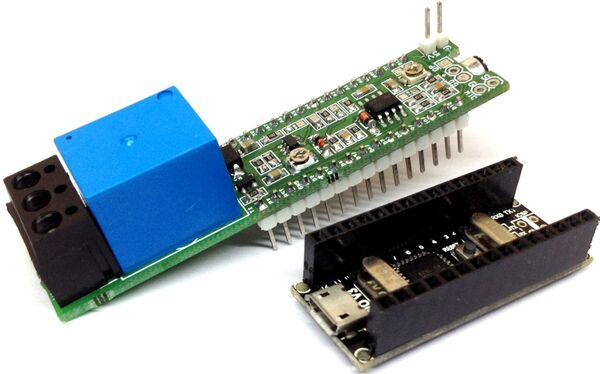
Sound Sensor With Onboard Relay Arduino Nano Shield
"This sound sensor with Relay driver shield for Arduino Nano can be used to develop sound-activated ON/OFF switch or other projects that require sound senor. LM358 op-amp is used as the amplifier, 1st op-amp amplifies the microphone signal, and 2nd op-amp works as a half-bridge rectifier that converts AC signal into a DC voltage. This DC voltage is connected to analog pin A4 of Arduino Nano, further, this circuit has a comparator that provides High-level signal output and goes low as the sound is detected, this signal is connected to D4 Pin of Arduino Nano. The board provides a dual output, analog voltage as well as a digital output. The output of the sensor is normally high and goes low when it detects sound. PR1 Trimmer potentiometer is provided to set the threshold." [...]
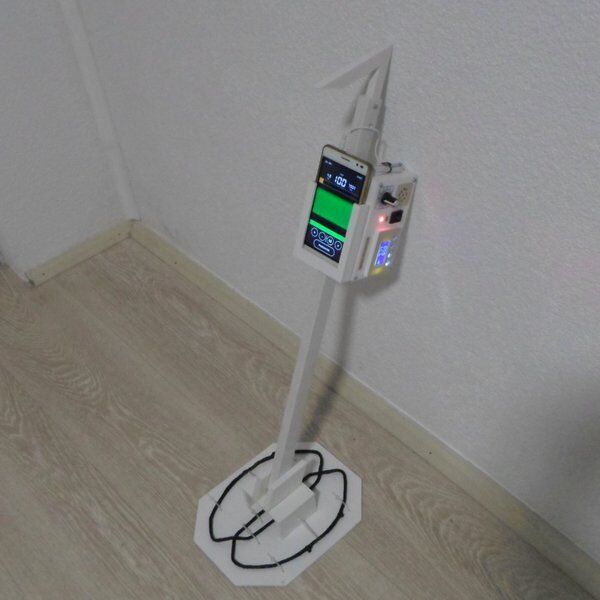
DIY simple smartphone Metal Detector
"DIY sensitive VLF METAL DETECTOR with Smartphone This Metal Detector detects a small metal coin at 25 cm and pot lid at 1m distance This metal detector is capable of detecting small metal objects at great distances. For example, a small metal coin or gold ring can be found at a distance of up to 25 cm. And the best part is that it is very simple and can be made by anyone who has basic knowledge in the field of electronics. The basis for the preparation is a "Smart Hunter" detector from "neco-desarrollo.es" page and also uses free Android software from the same company. This company is a leader in designing hardware and software that can be used to make simple but high-performance metal detectors. This time I tried to simplify it even more by replacing the Arduino microcontroller with chip (about2$) signal generator module with adjustable frequency and duty cycle from Aliexpress." [...]

Delightfully Delirious Day Clock
"Also wondering what day it is today? This delightfully delirious day clock narrows it down to roughly eight different possibilities! " [...]
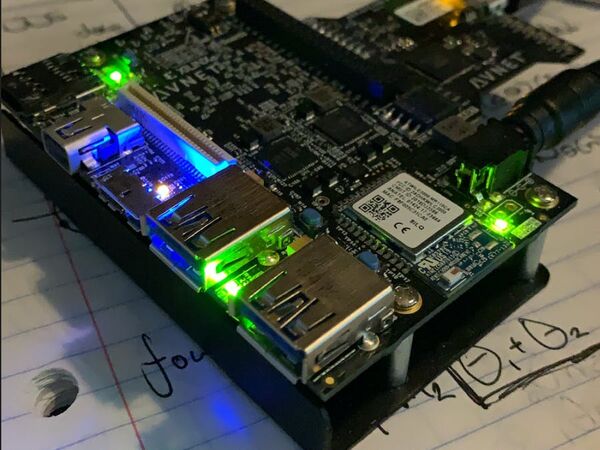
Xilinx DDS Compiler IP Tutorial on the Ultra96
"An introduction to the Xilinx direct digital synthesis compiler with simple implementation on the Ultra96 V2. Direct Digital Synthesizers (DDS) are a key tool in software defined radios and digital communication systems as they provide a way in the digital domain to generate a complex signal that is also variable. While the theory behind the DDS is fairly straightforward, implementing one for the first time in an FPGA can be a bit challenging, which is why I wanted to create this project as a very simple example of how to take the Xilinx DDS Compiler IP and get it running in the programmable logic of the Ultra96 board. Also referred to as numerically controlled oscillators (NCO), a DDS contains a lookup table for the data values of a sinusoid which takes in a given phase value and outputs the appropriate data/magnitude value for the sinusoid. This input value determines the frequency of the output waveform in that the smaller the value is, the slower the DDS steps through the sinusoid lookup table and the output waveform is lower in frequency. In contrast, the higher the input value, the faster the DDS steps through the lookup table and the higher frequency the output waveform is." [...]
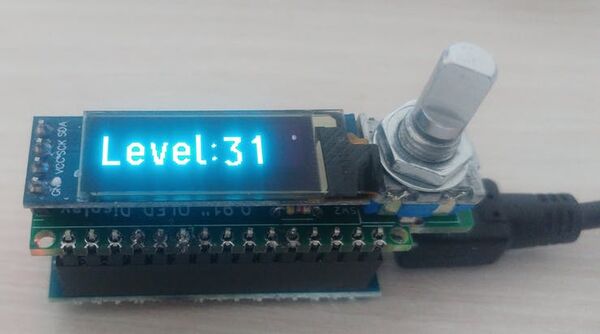
Nano Screen
"Nice fitting on top without wiring. " [...]

Home Automation Smart Plugin with ESP8266 & Blynk
"This tutorial is about making a Smart Switch with ESP8266 & Blynk for anything you want to turn on or off automatically. This project is a perfect beginner project that doesn't need very many parts. You will need a ESP8266, a relay, 3 male - female jumper wires, a spare plugin wire, and an outlet box with an outlet and outlet cover. " [...]
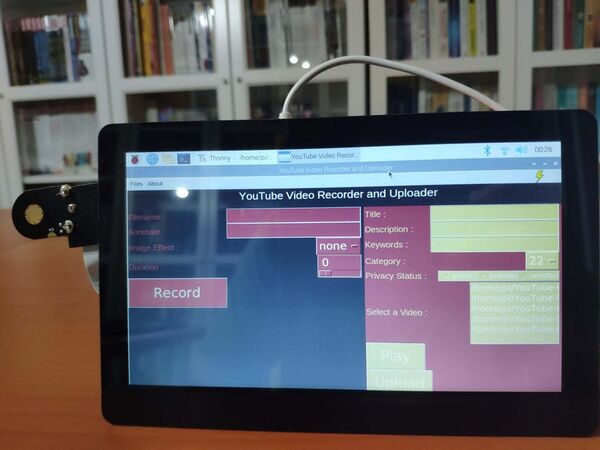
YouTube Video Recorder and Uploader with Night Vision on Pi
"Develop a GUI to record videos with various image effects and upload them to YouTube with given parameters via the YouTube Data API v3. I am fond of experimenting with the Raspberry Pi camera options (such as image effects and duration) while recording demonstration videos for my electronics projects, and especially when birdwatching in my balcony :) When I take a video with my Raspberry Pi for the mentioned reasons, I usually upload the video to my YouTube channel, as a private video, due to the storage limit on Pi. However, the process of recording and uploading through Raspberry Pi had miscellaneous and intricate steps to follow all over again: adjusting video settings manually, opening my YouTube channel, defining video parameters, etc. Thus, I contemplated a GUI by which I could adjust the video recording settings and define the parameters to upload videos to YouTube without signing to my YouTube channel on the browser every time. After some research, I decided to use the Google APIs Client Library for Python to communicate with my YouTube channel through the YouTube Data API. In the end, I developed a GUI (YouTube Video Recorder and Uploader) in Python, including two interfaces - Record menu and Upload menu." [...]

3D Printed Gaming Mouse - G305
"I really like the look of the final mouse 2 and the glorious model O, but I also wanted a wireless mouse. So I thought, why not combine one of the best wireless mouses, the Logitech G305, with the look of the final mouse 2? Well, after some searching online I found out that there are several 3D printed mods that you can do to the G305, and one of them had a final mouse 2 look! So, I purchased the 3D model, and made my own wireless ultralight mouse. " [...]
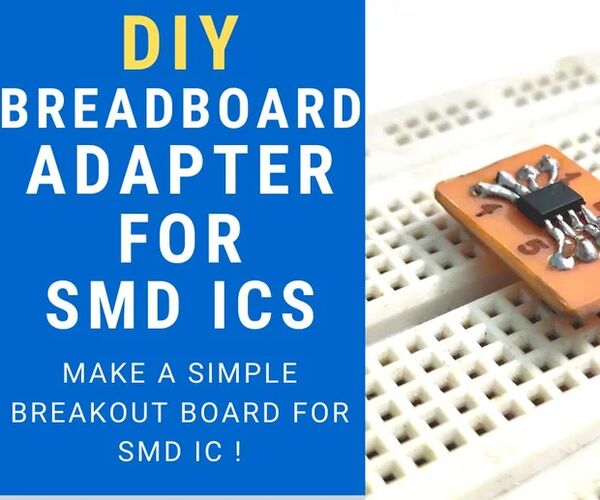
Make SMD ICs Breadboard Friendly !
"It happens many a times that our favorite IC is only available in SMD package and there is no way to test it out on a breadboard. So in this short instructable I would show you the way I made myself this little adapter for SMD IC such that It can easily be used to test your circuit on a breadboard and even solder it on a perfboard. Note:Such breakout boards are available in the market with a professionally made PCB but this is just a quick and easy way to get the same result which I tried and works just fine for my circuit and I wanted to share it with you all. It is completely possible to fabricate PCB for such design and use it. " [...]
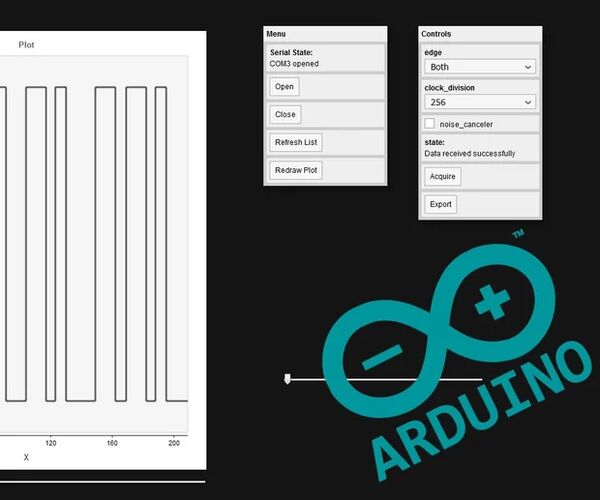
Arduino UNO Logic Sniffer
"This project started as a simple experiment. During my research over the ATMEGA328P's datasheet for another project, I found something rather interesting. The Timer1 Input Capture Unit. It allows our Arduino UNO's microcontroller to detect a signal edge, store a timestamp, and trigger an interrupt, all in hardware. I then wondered in which application it could be useful, and how to test it. As I want to get a logic analyzer for some time now, I decided to try implementing one in my Arduino UNO board, just to test the feature, and see if we can get good results out of it." [...]
That's all Folks!



